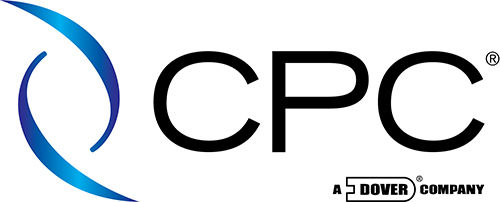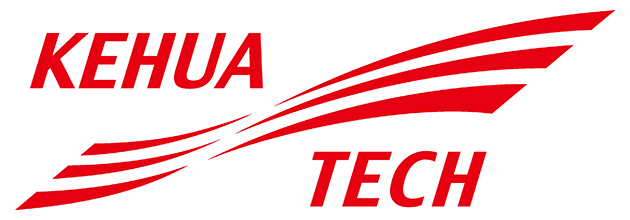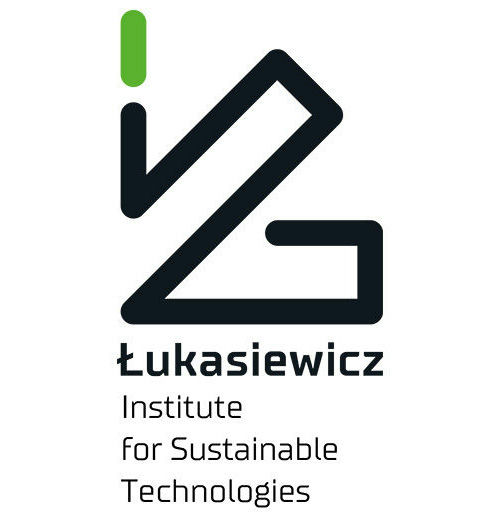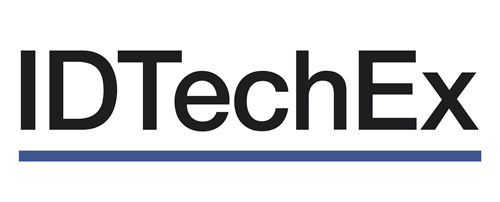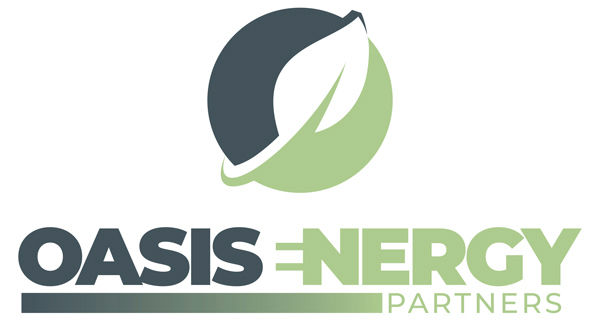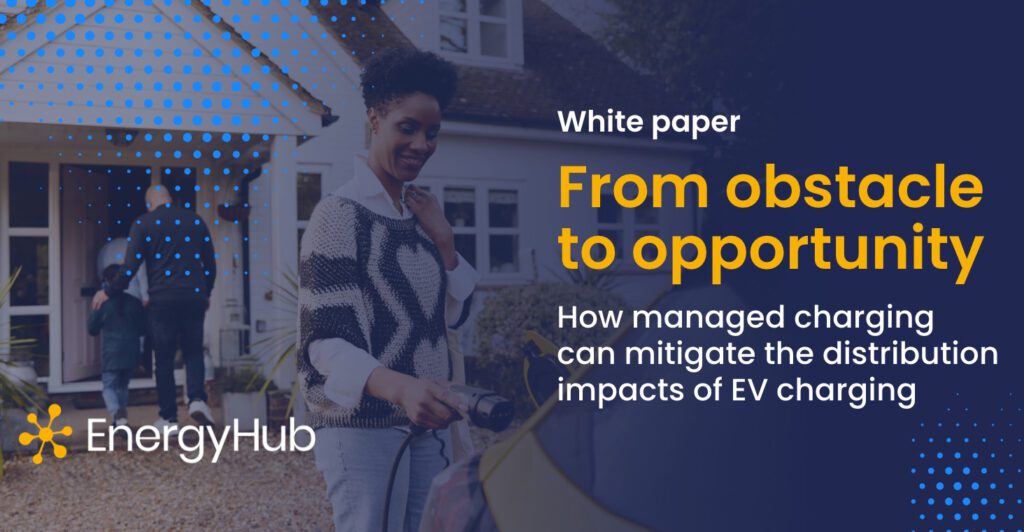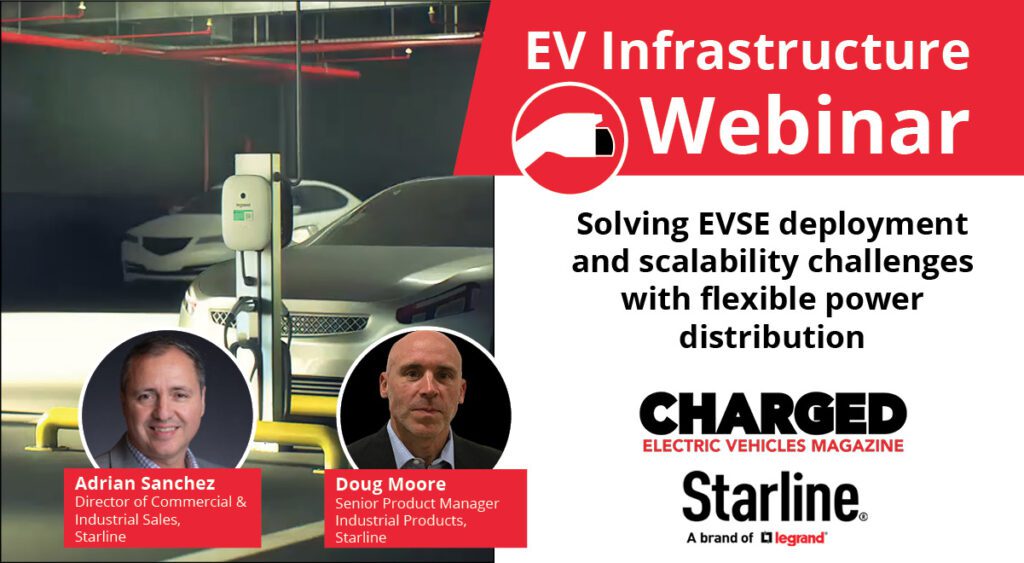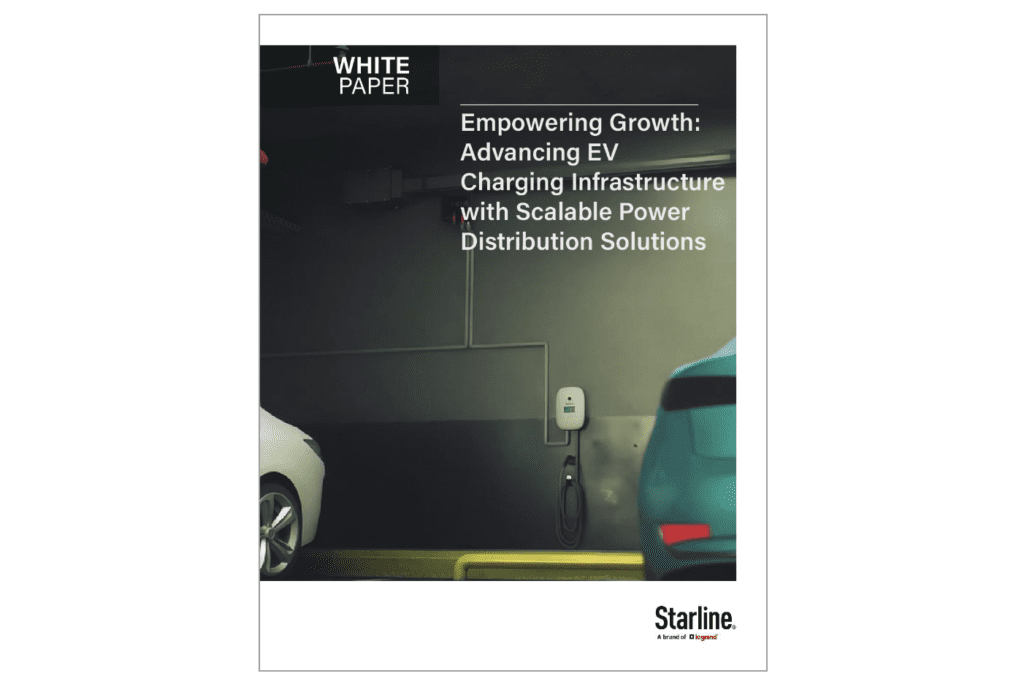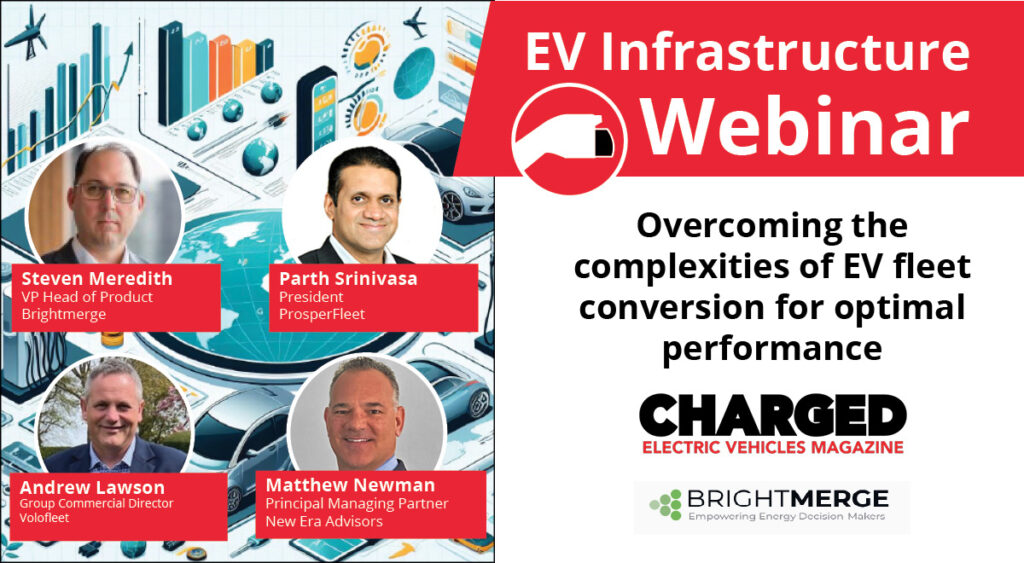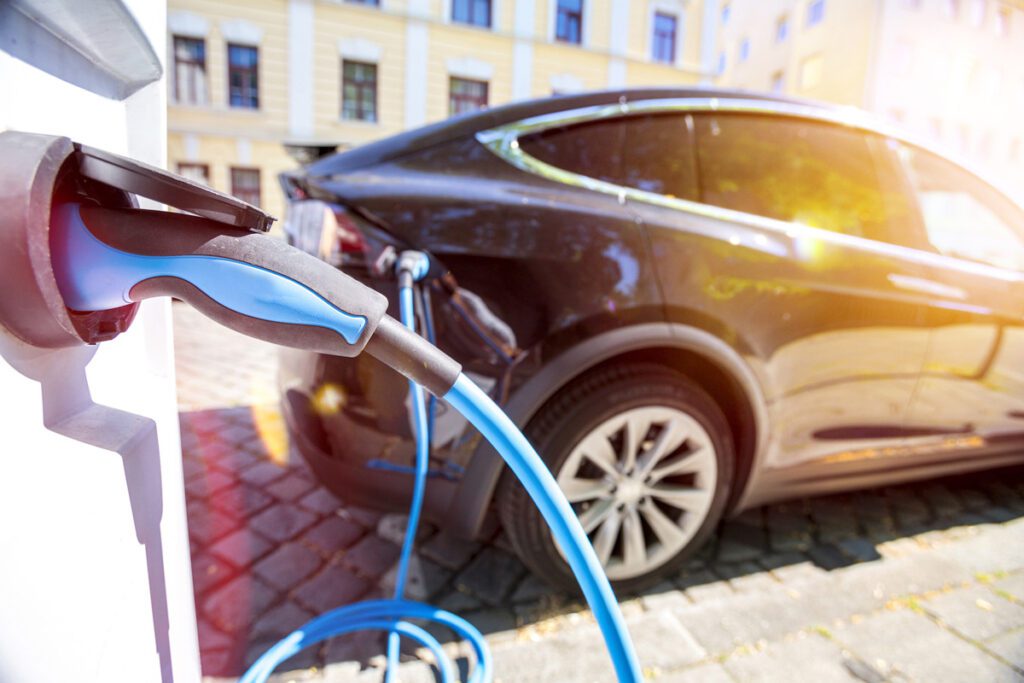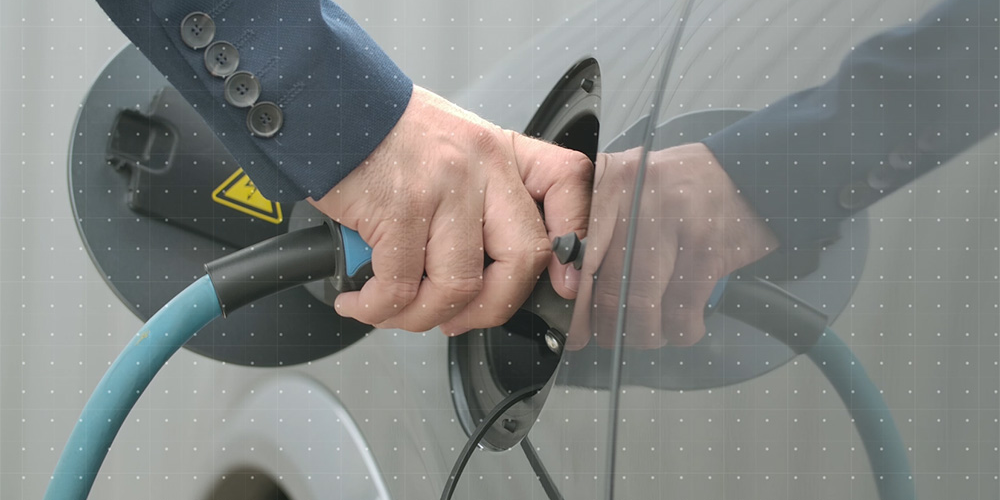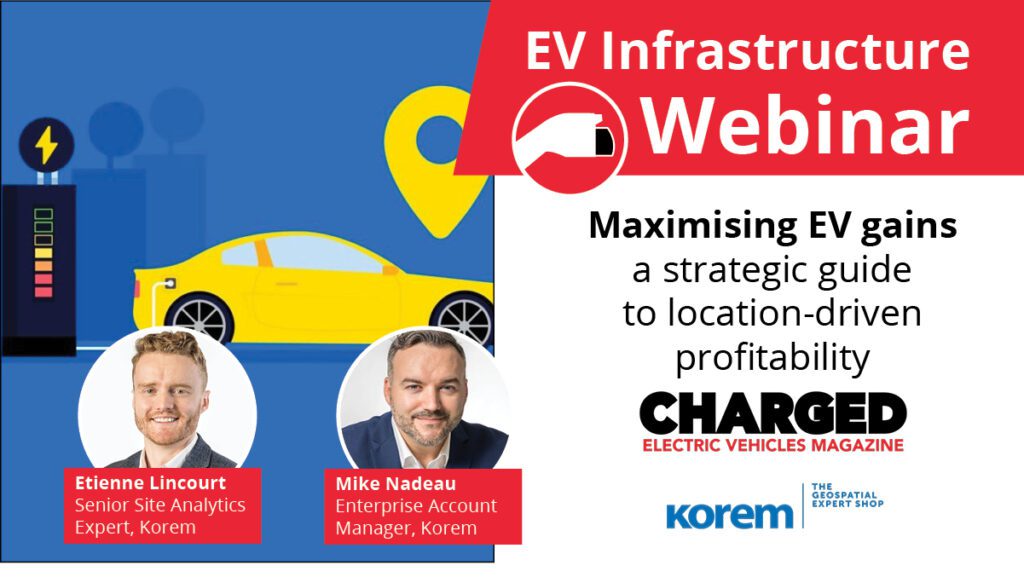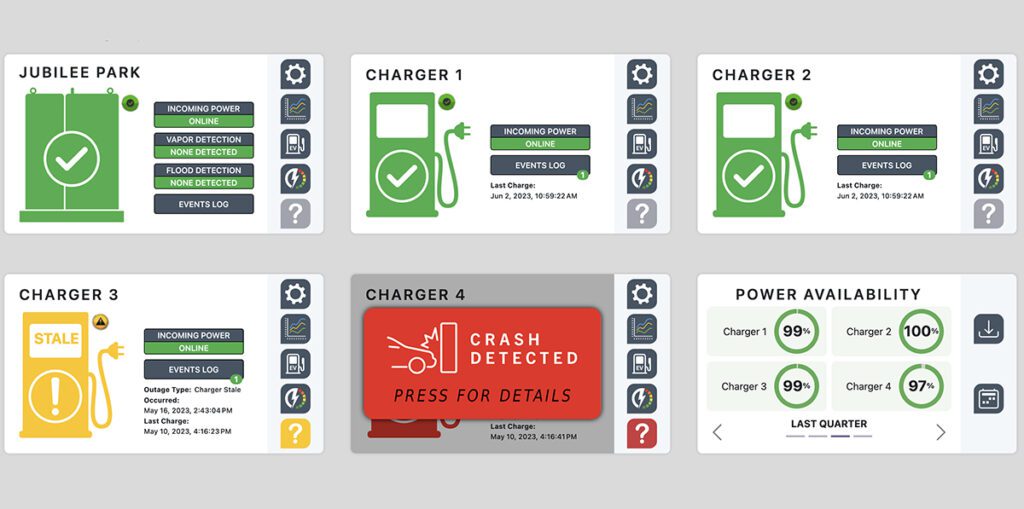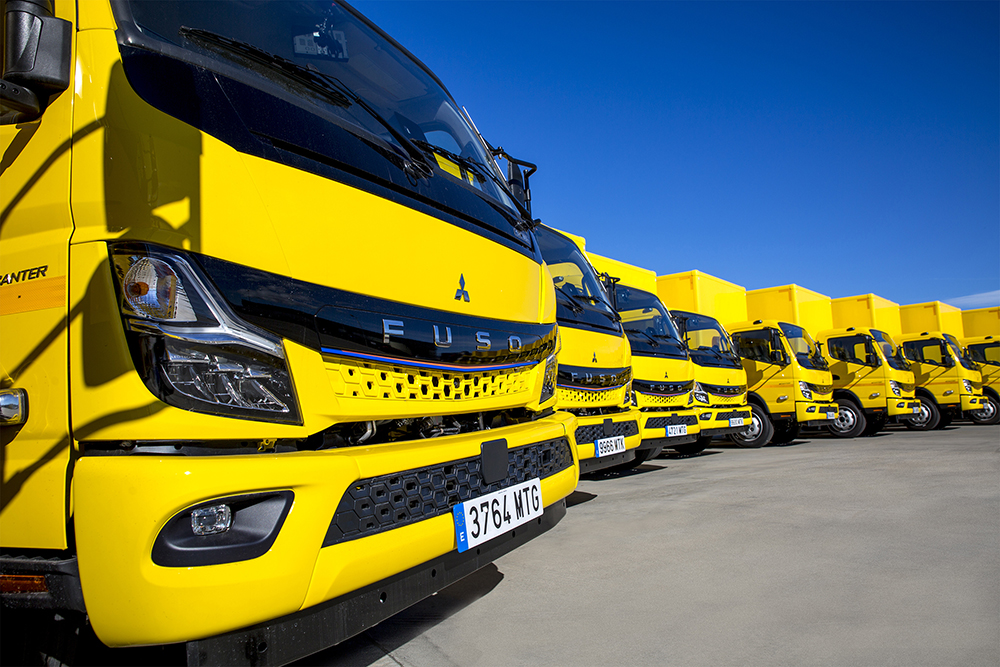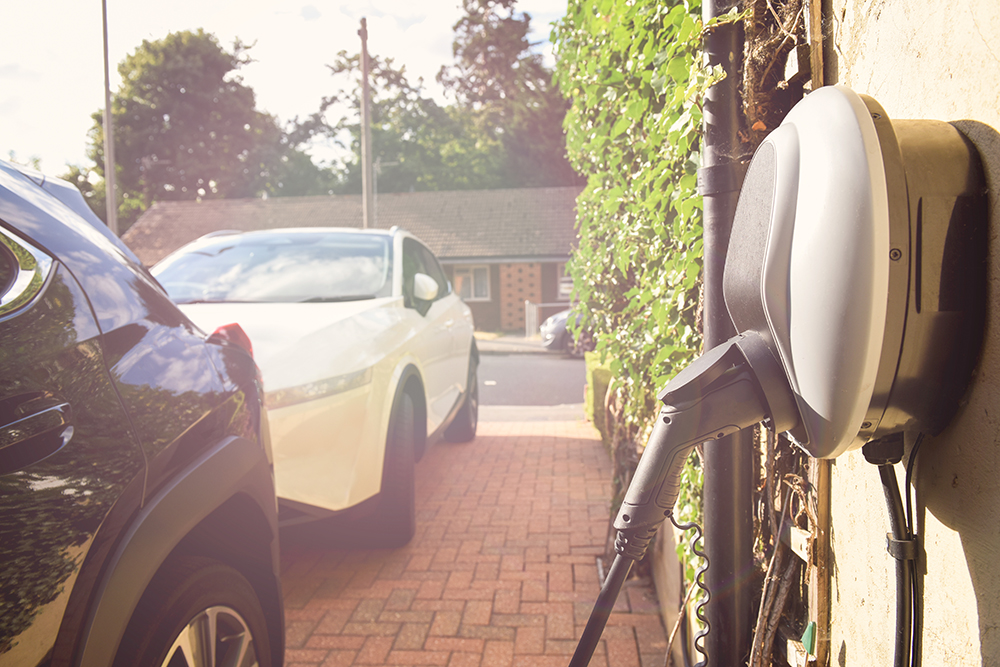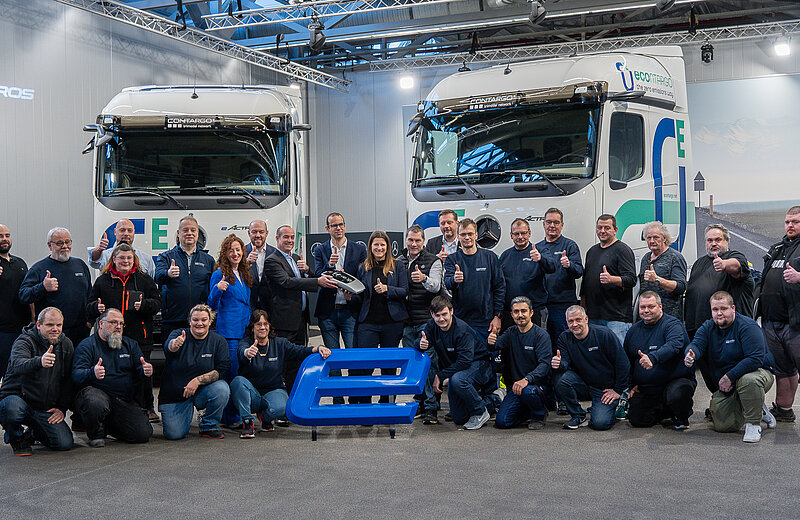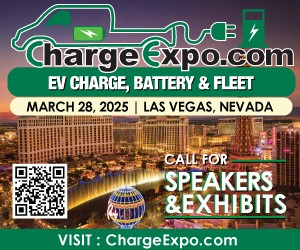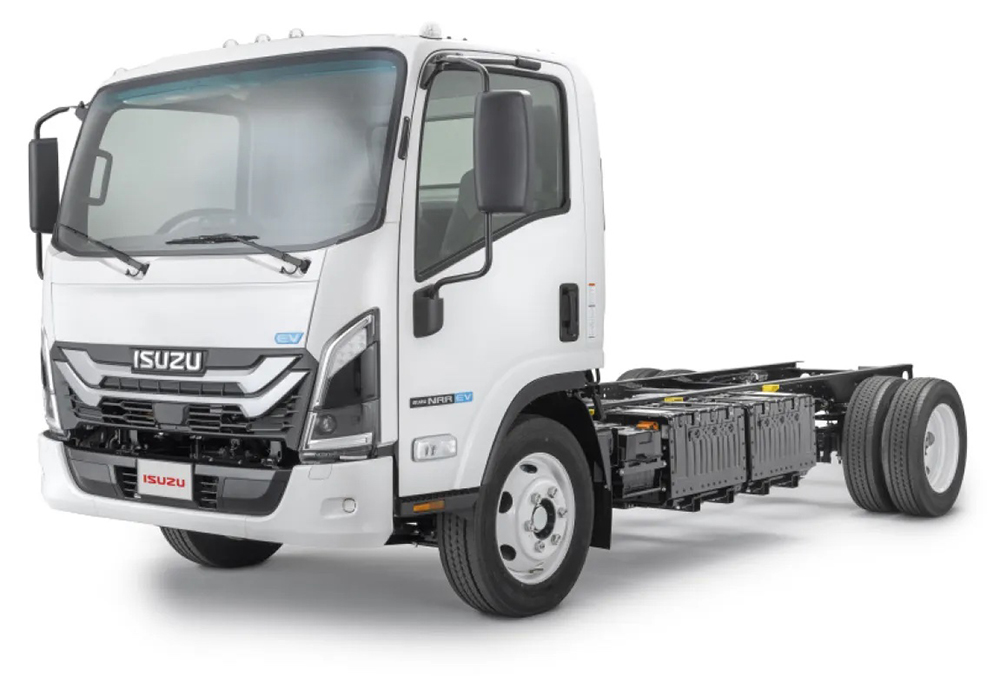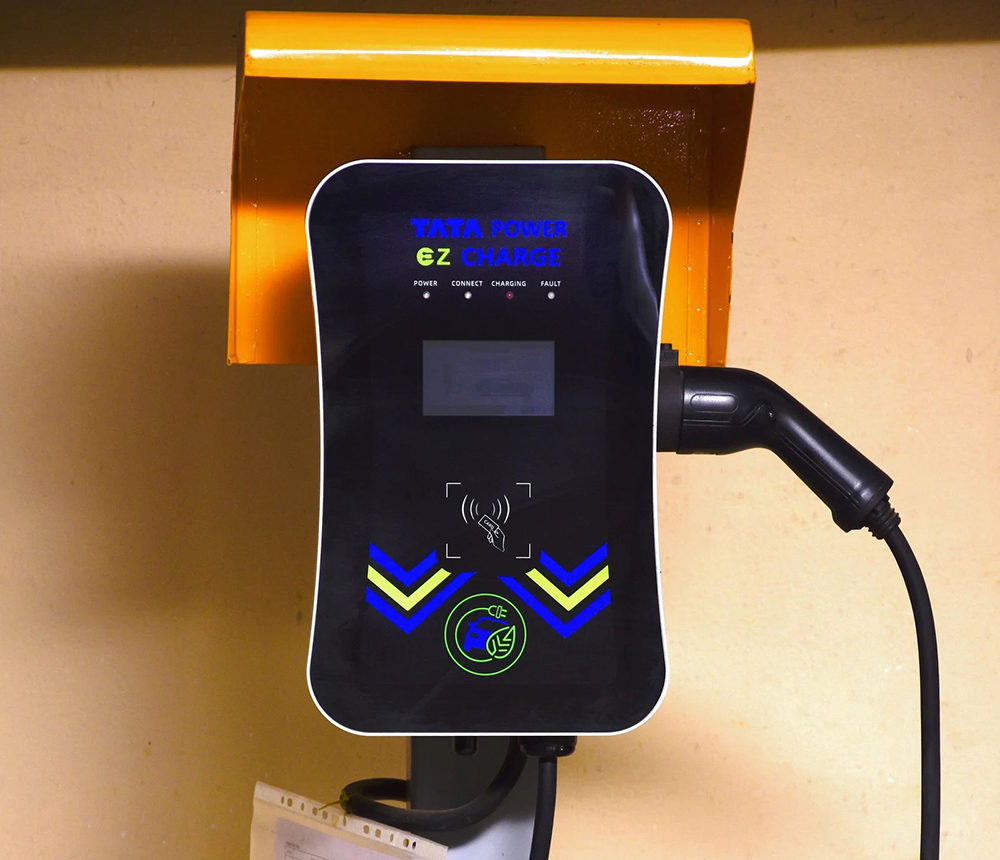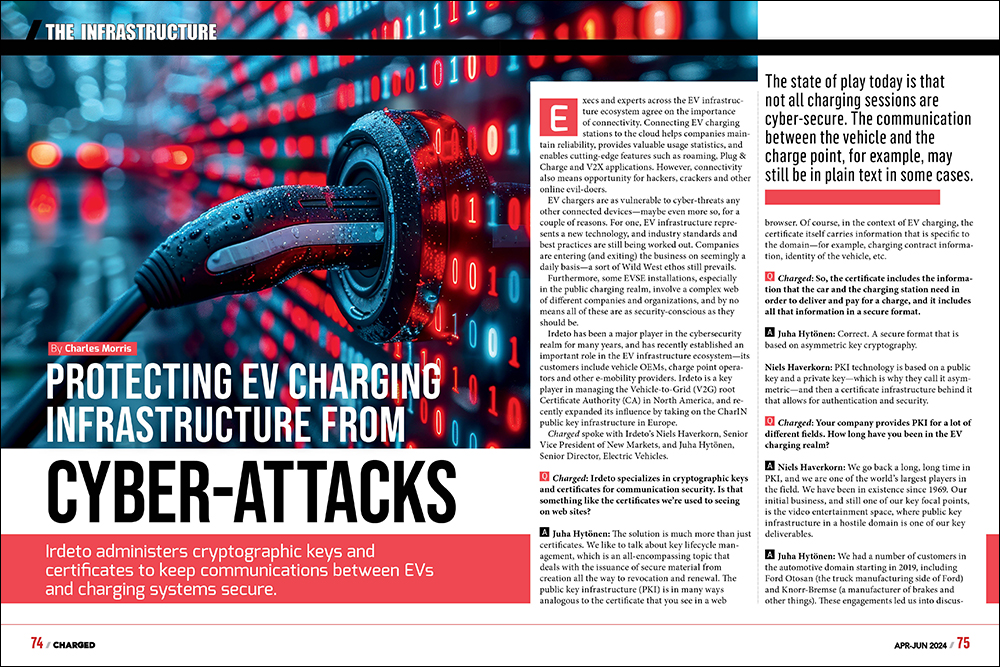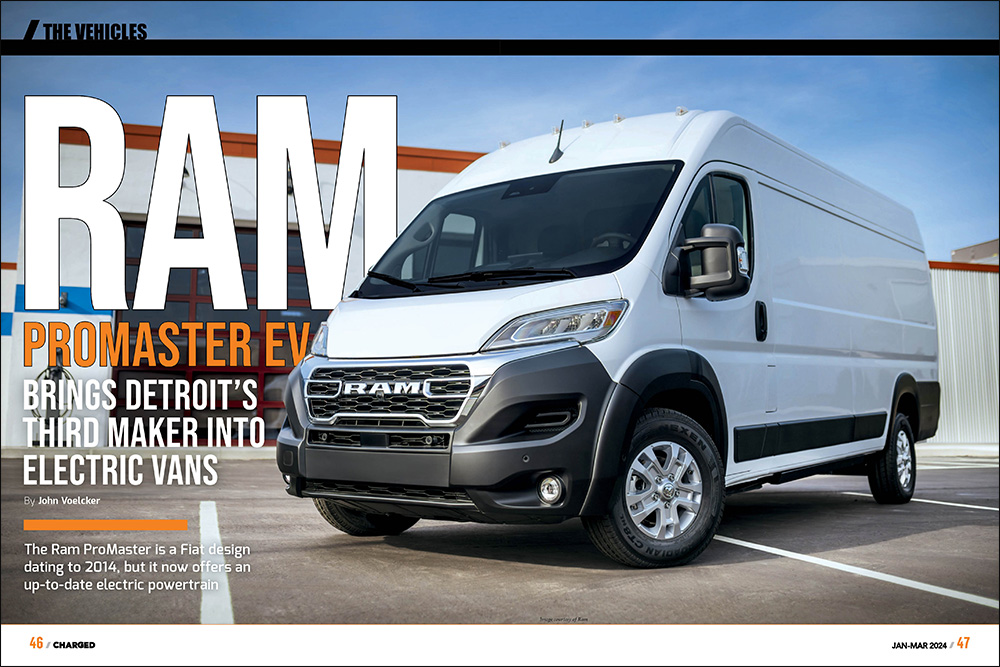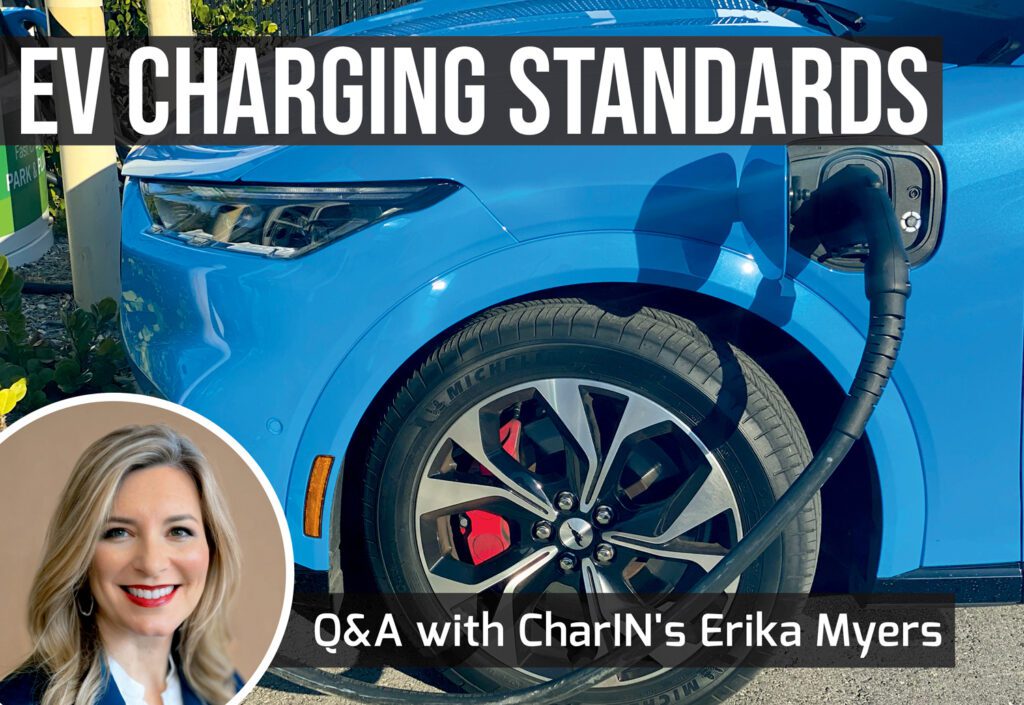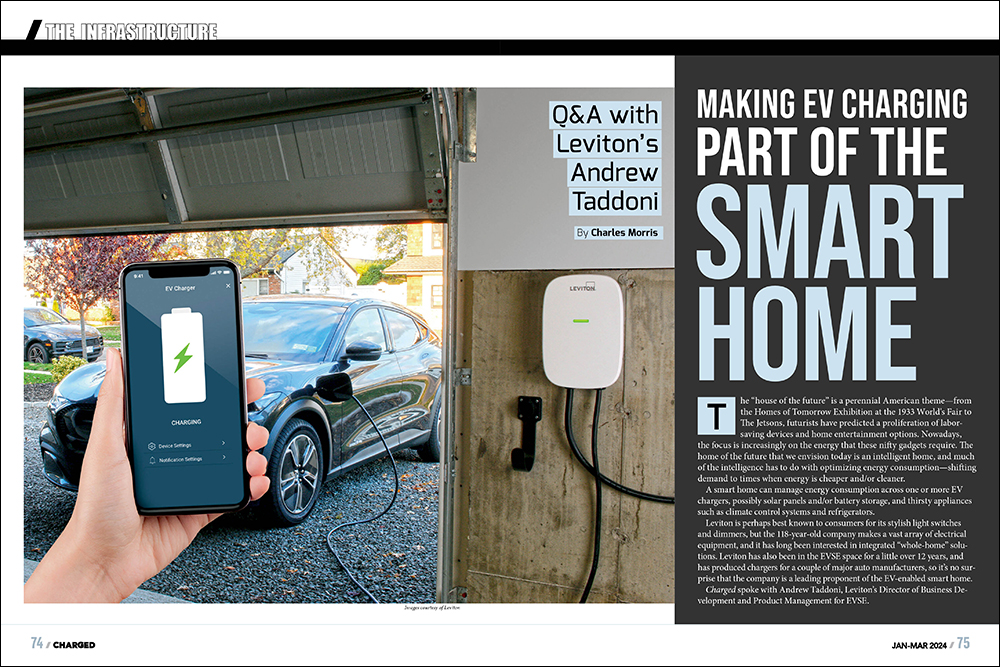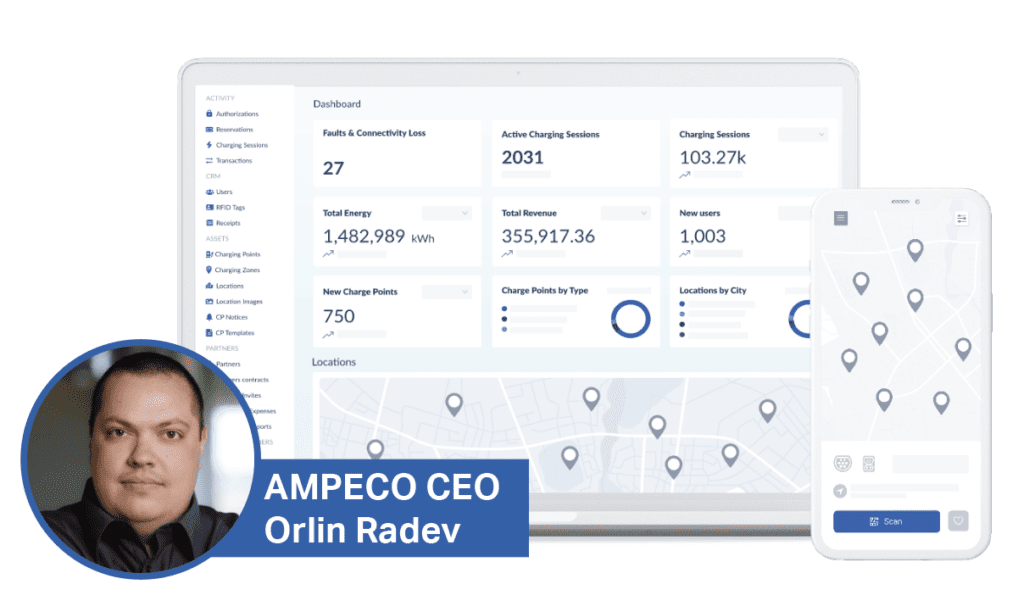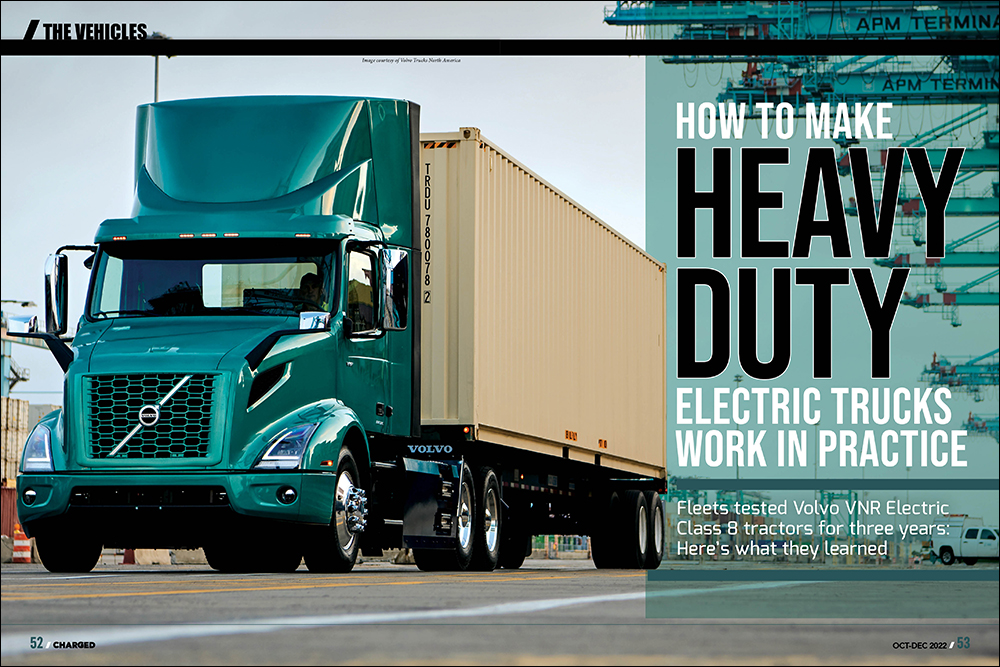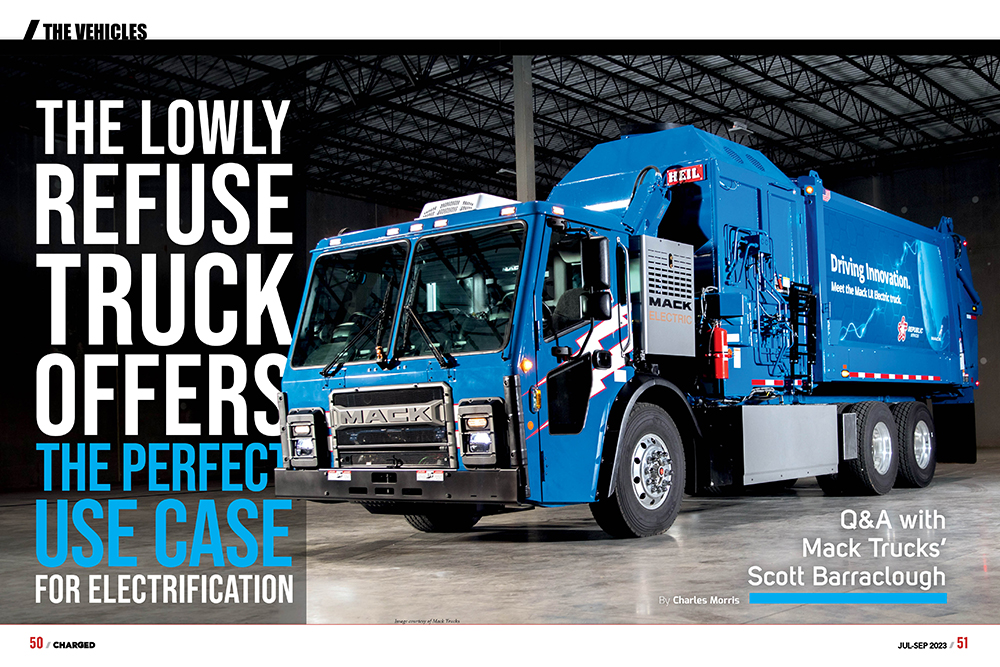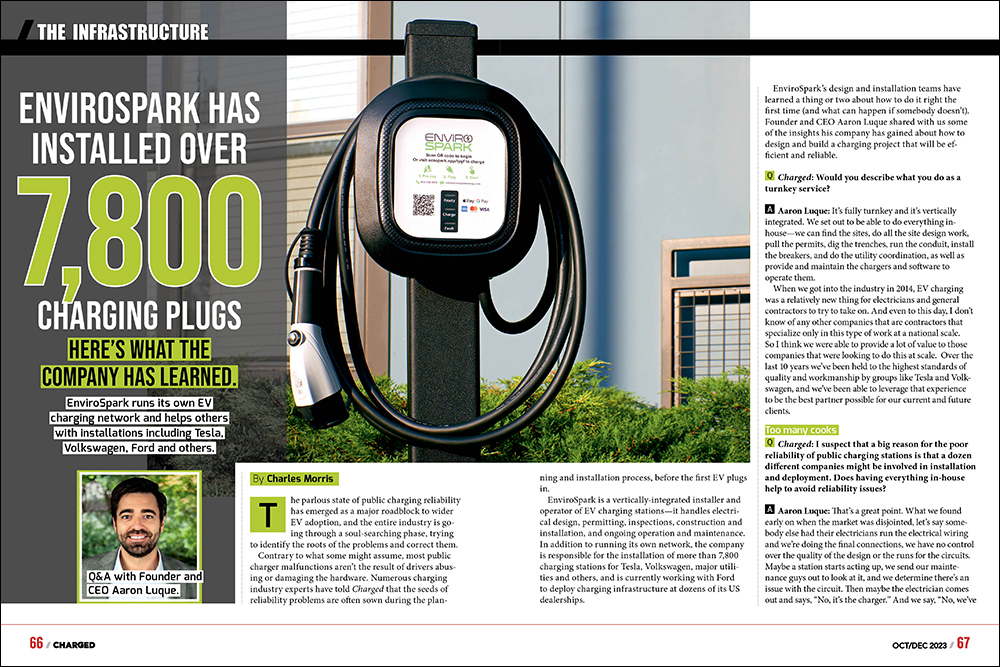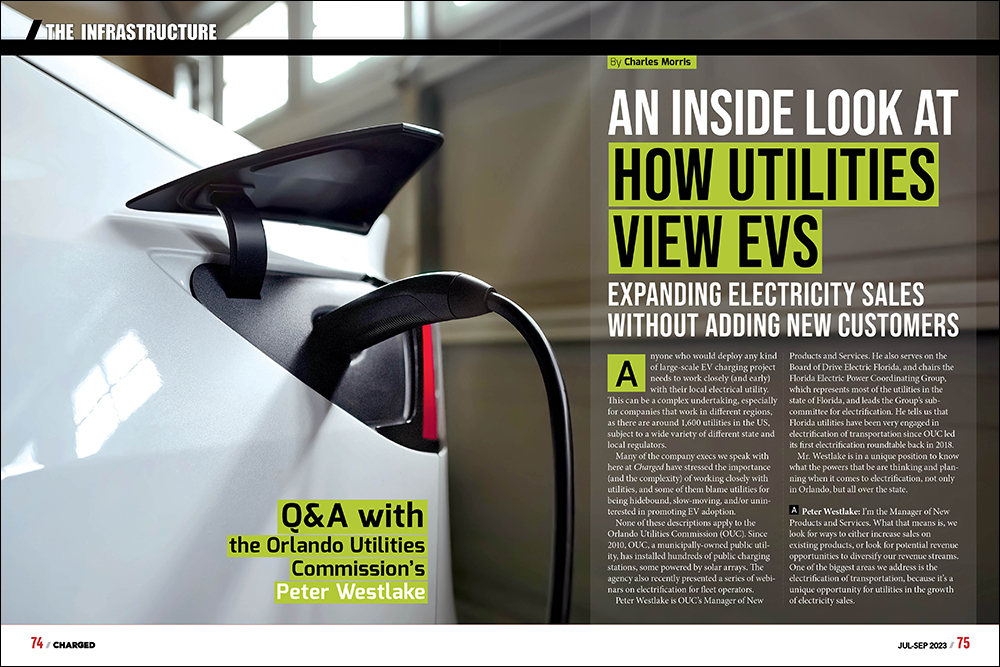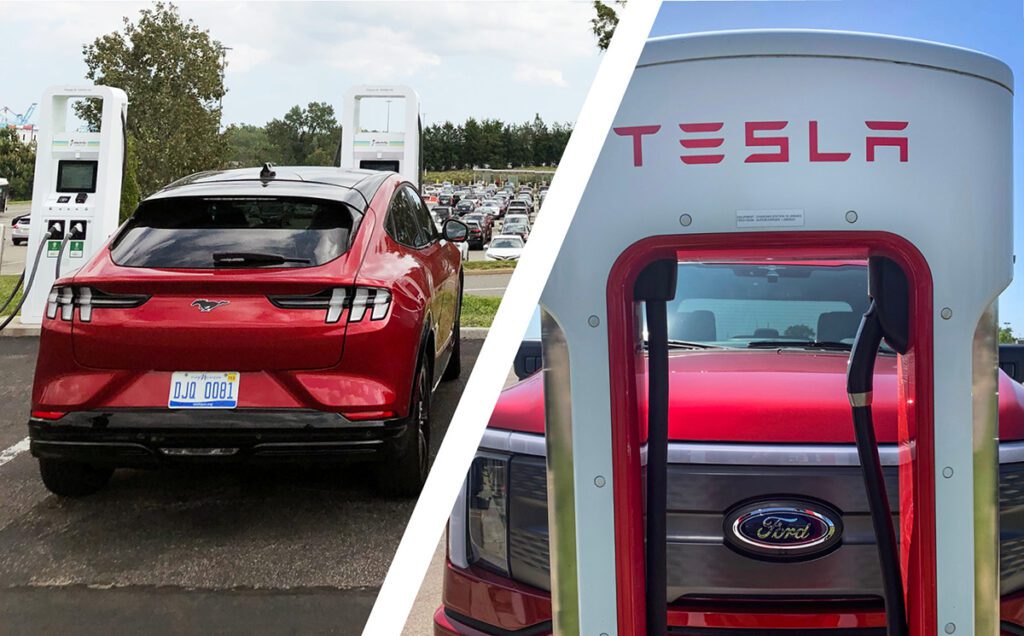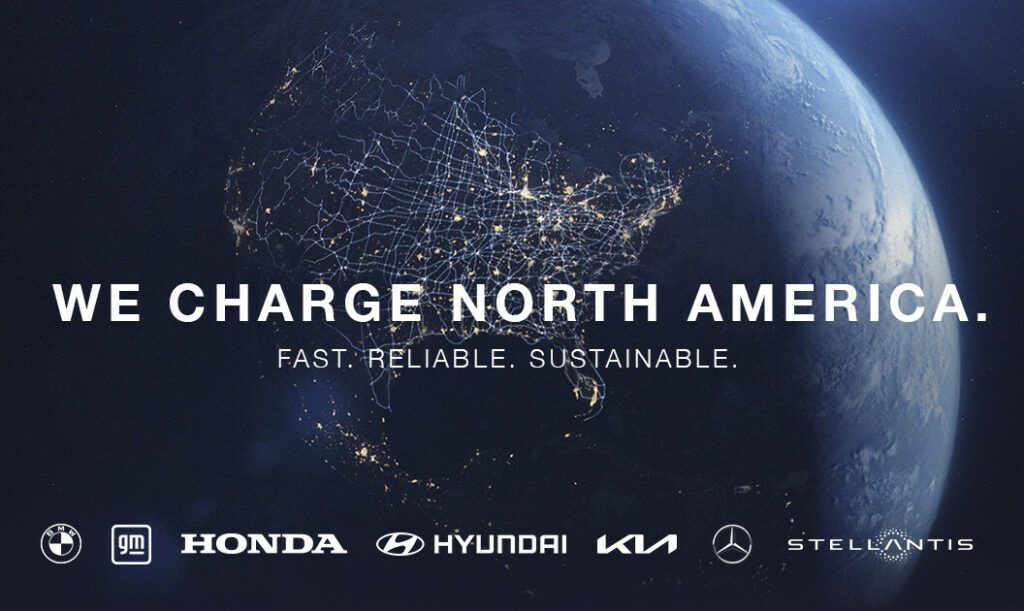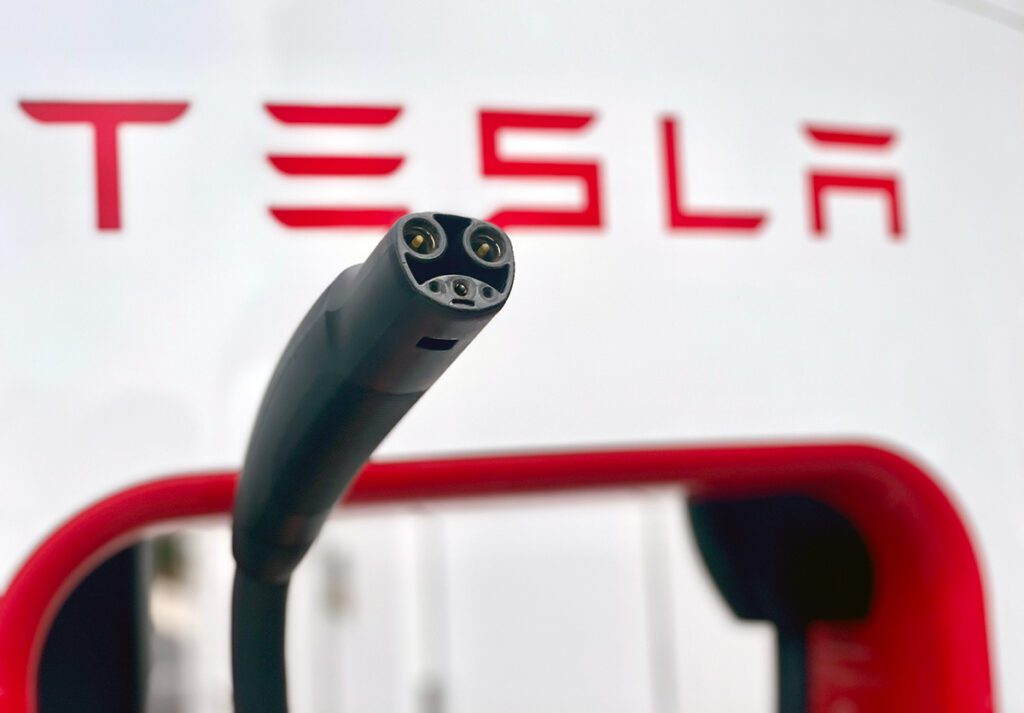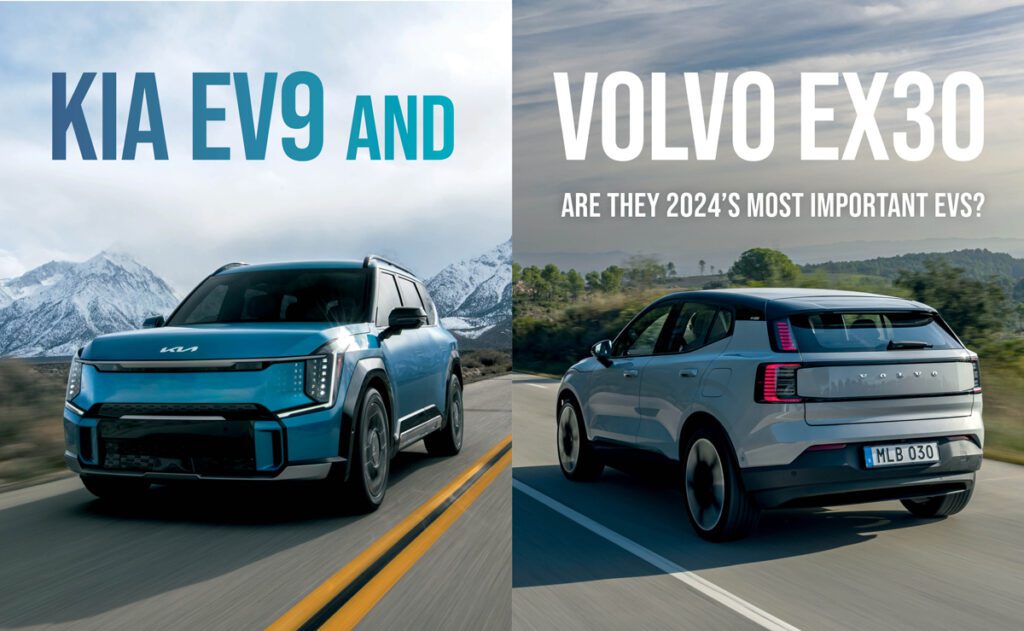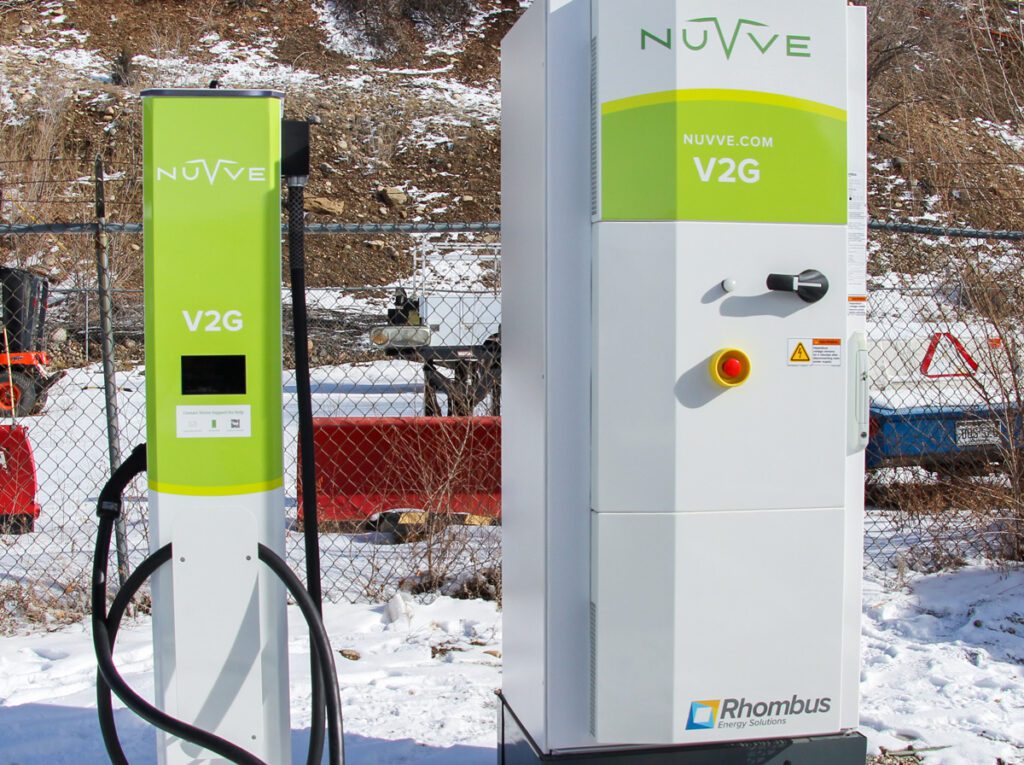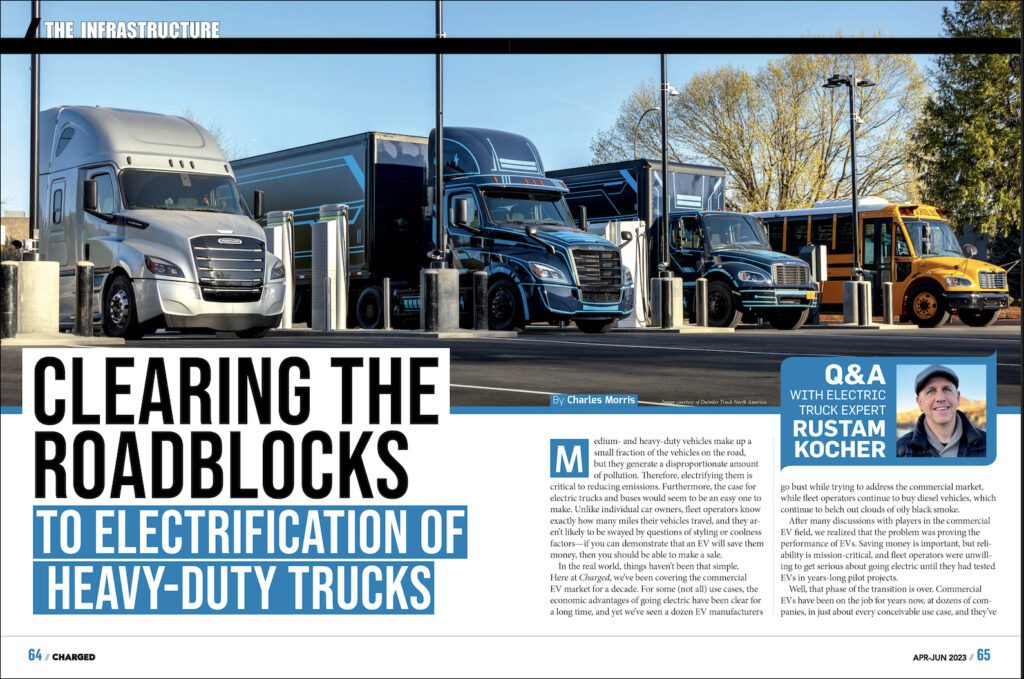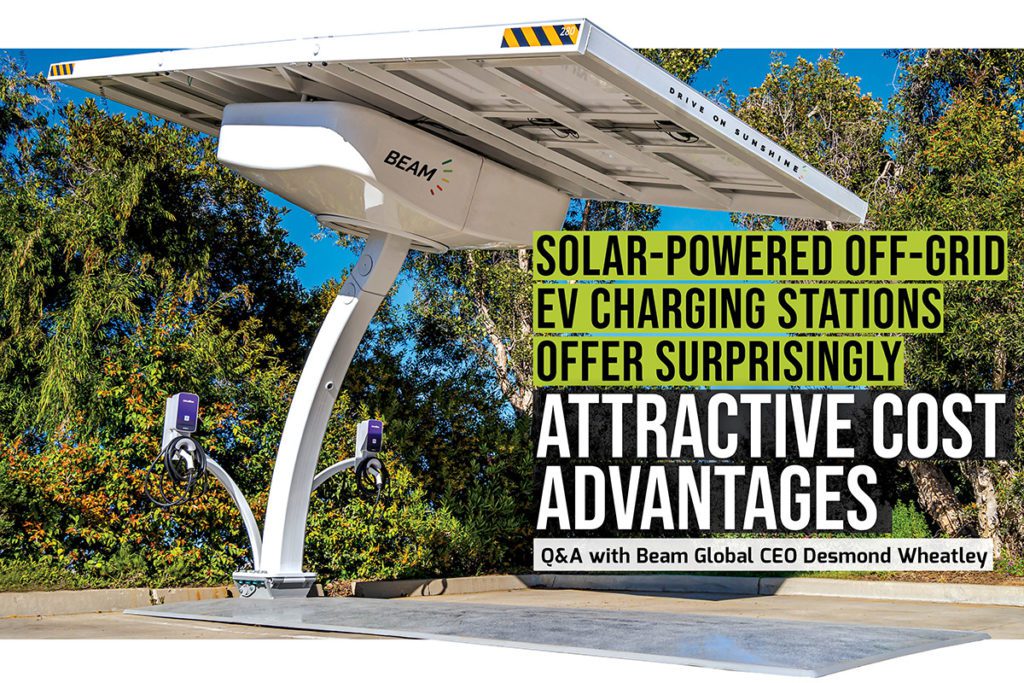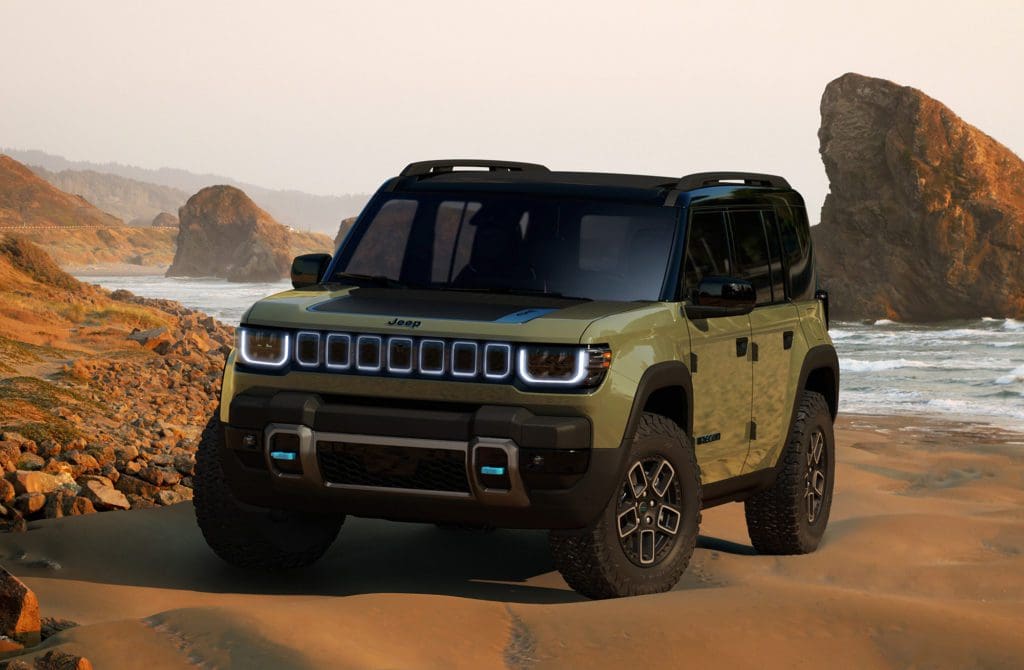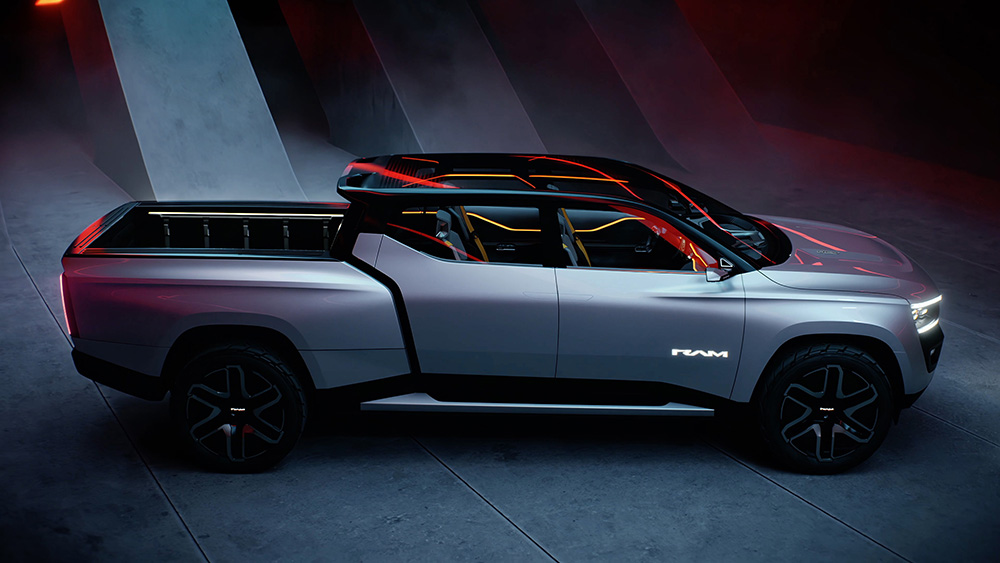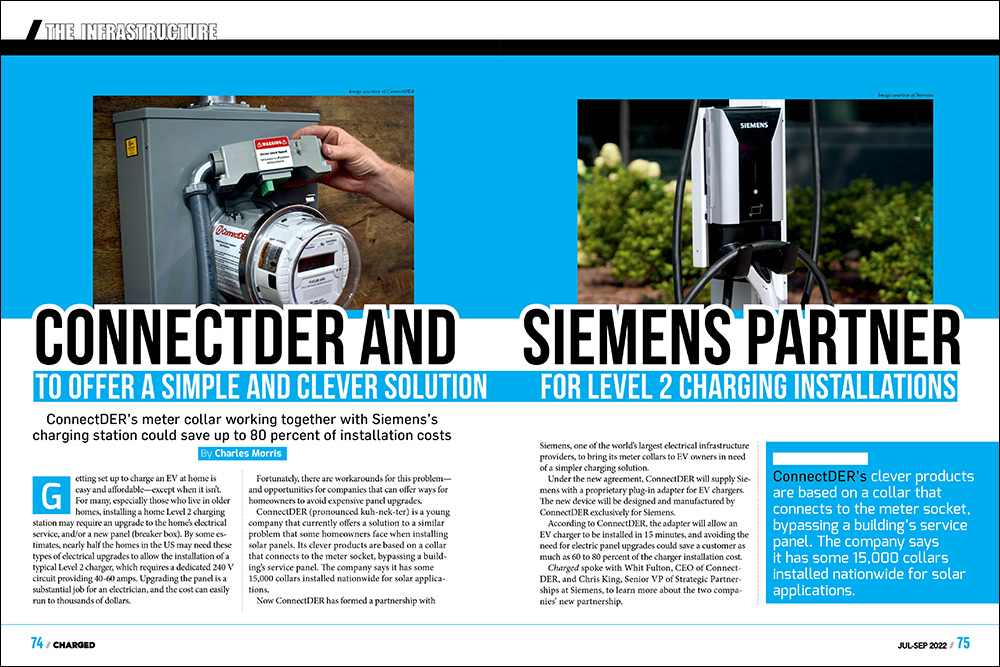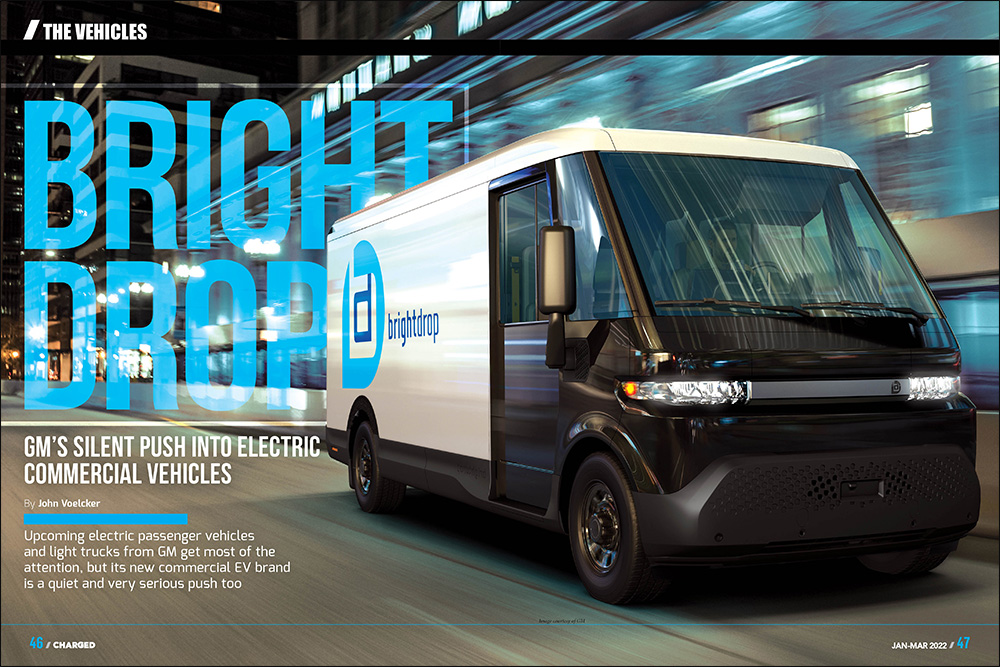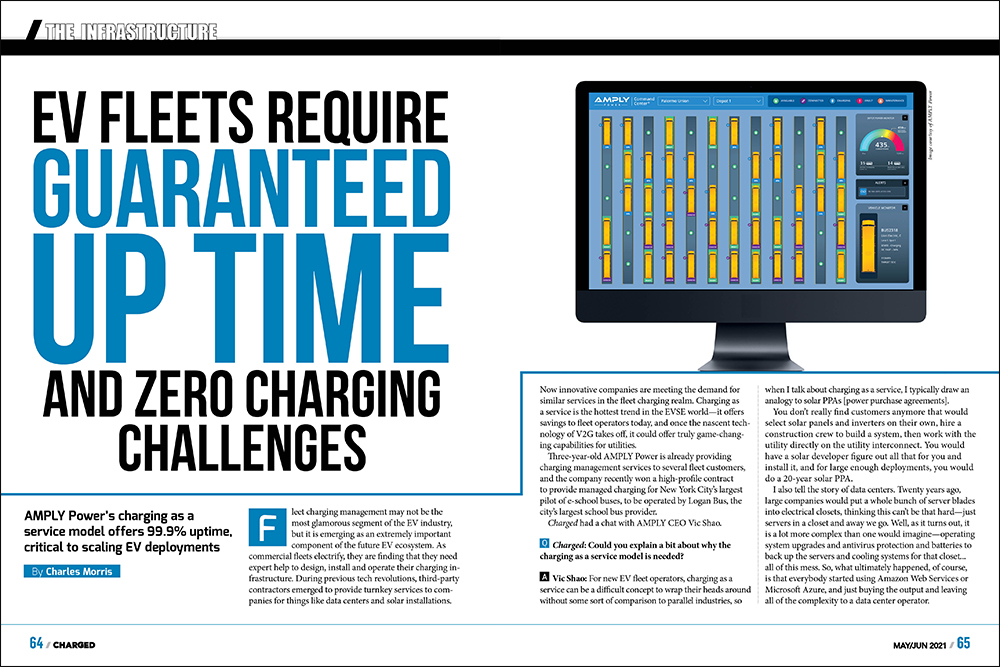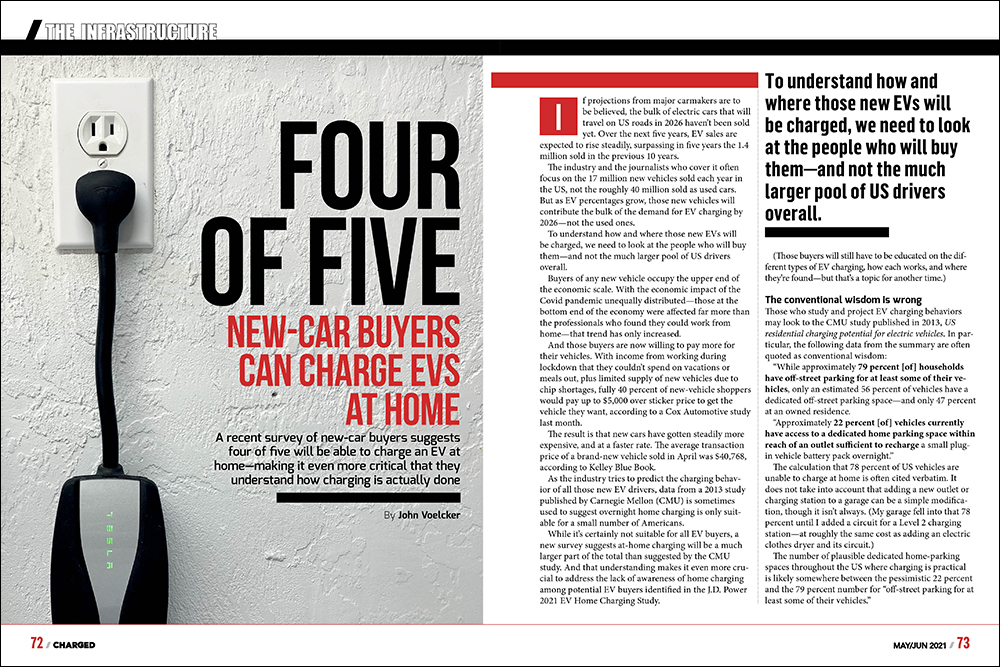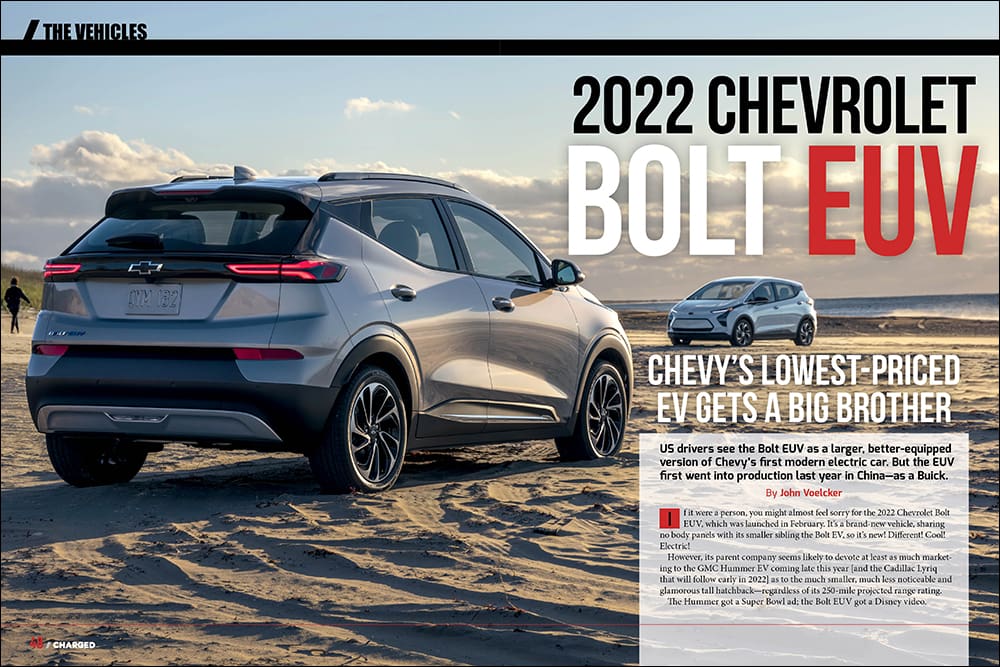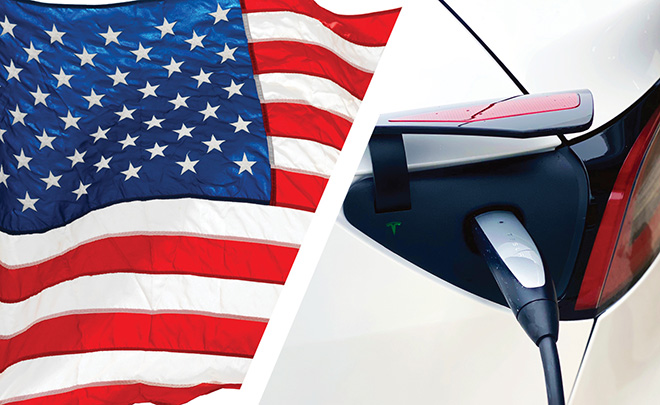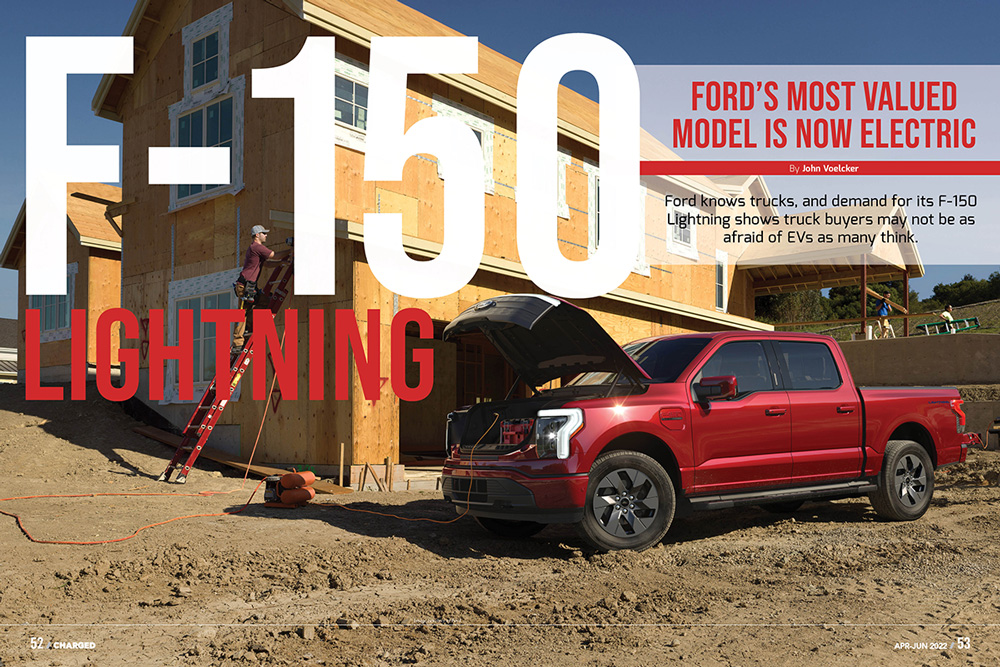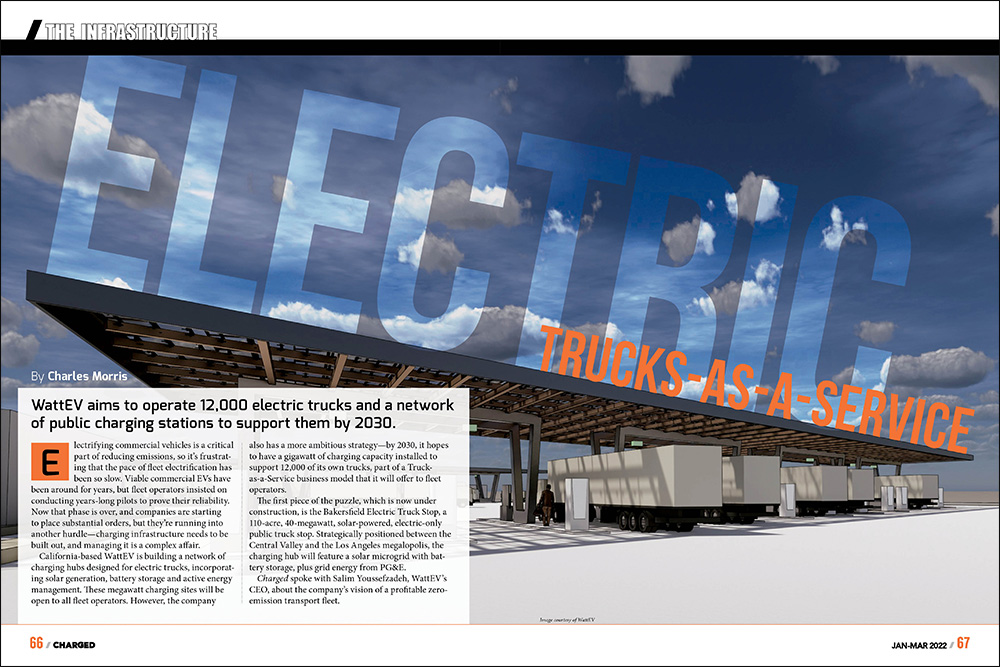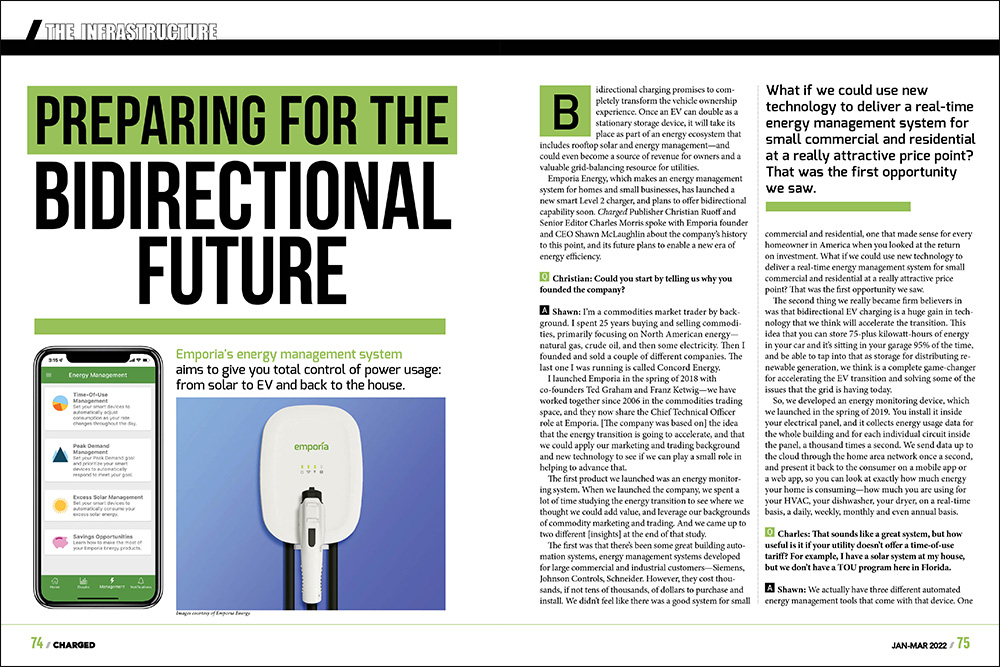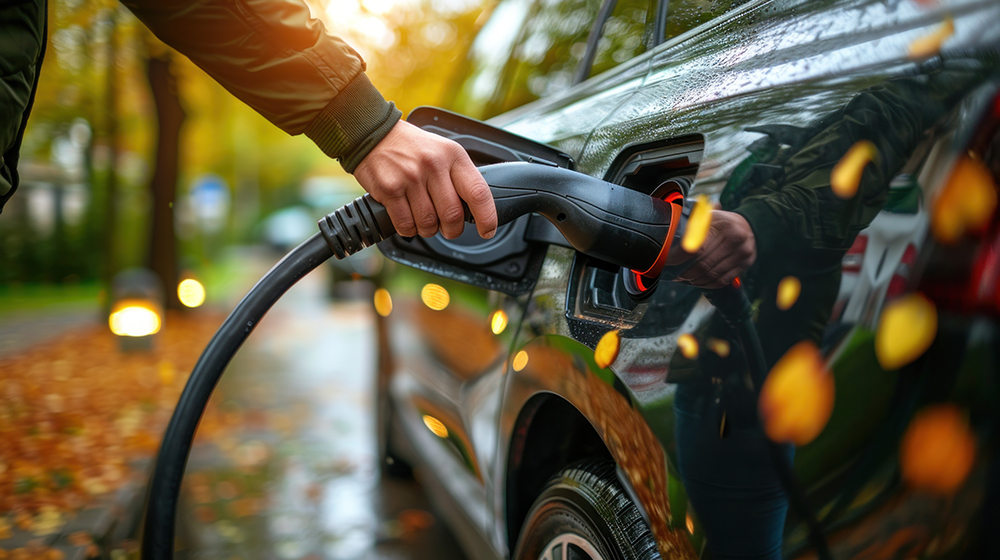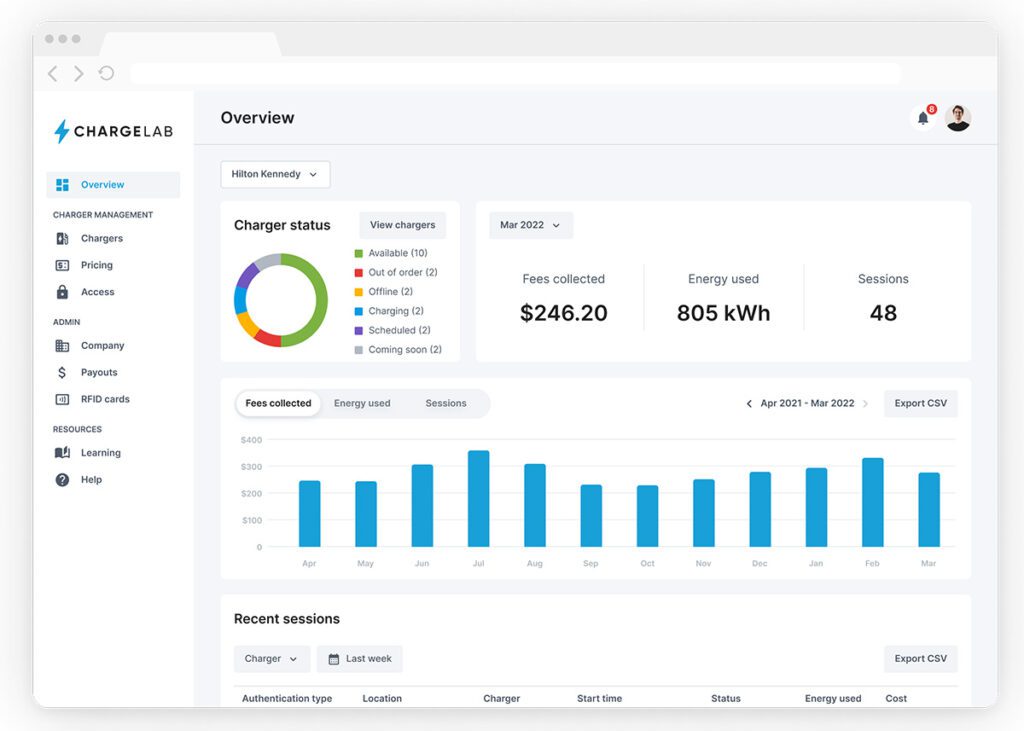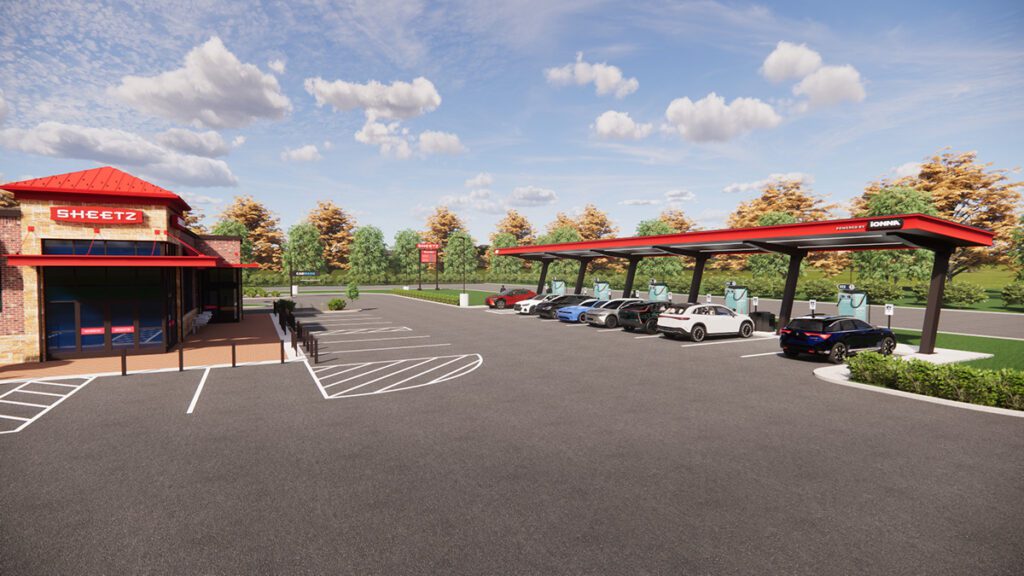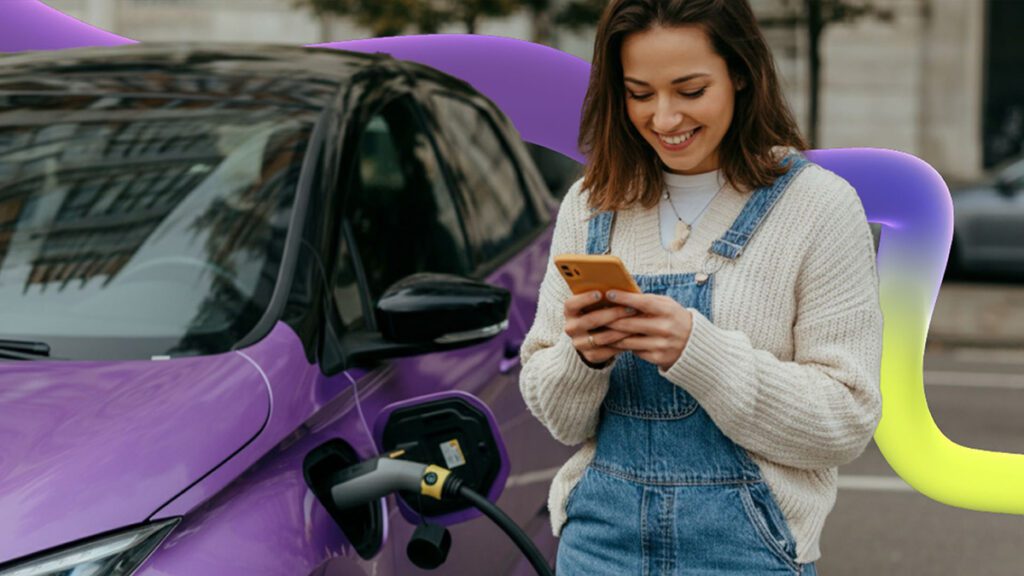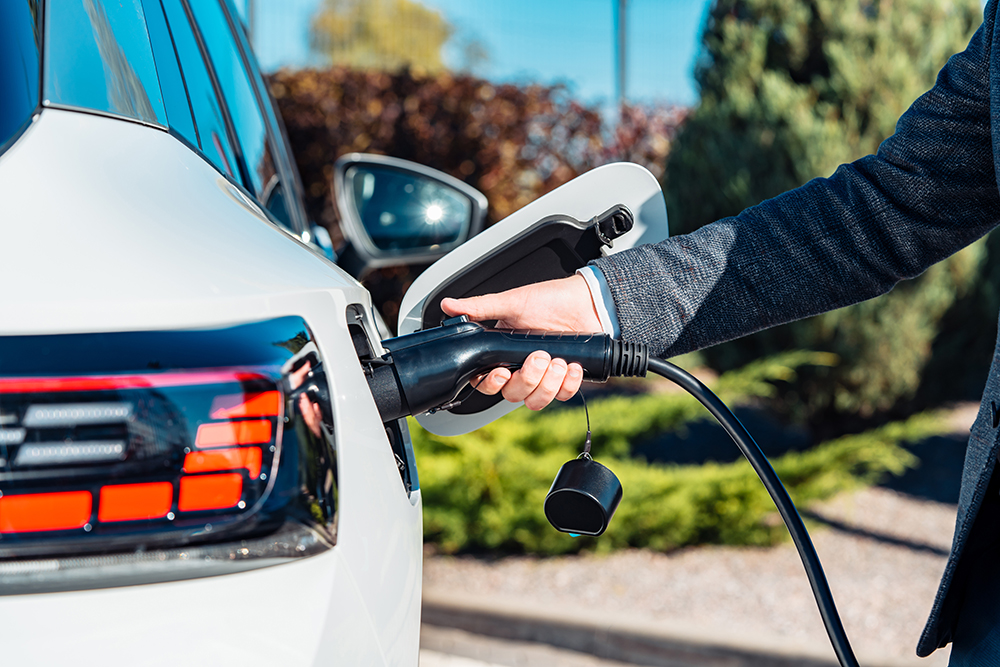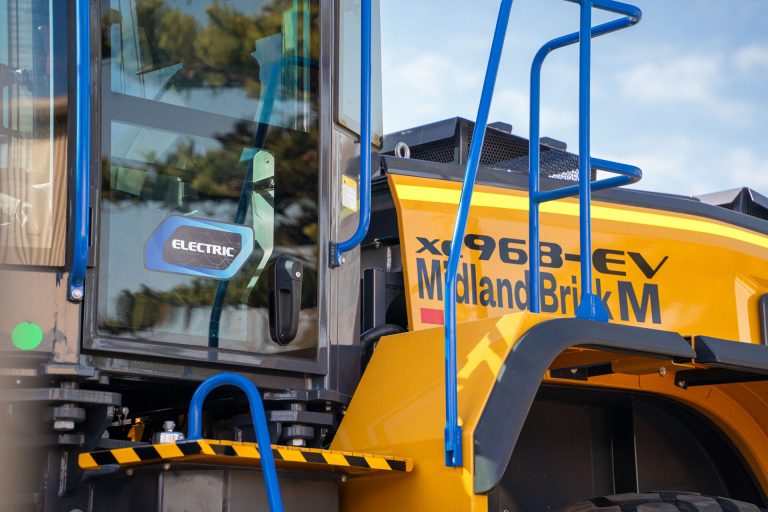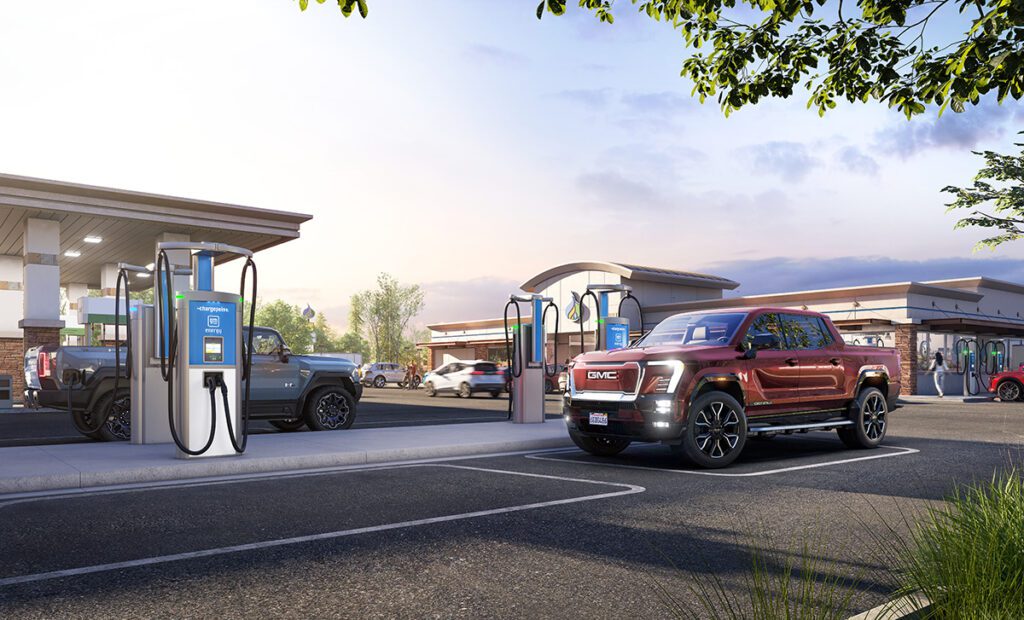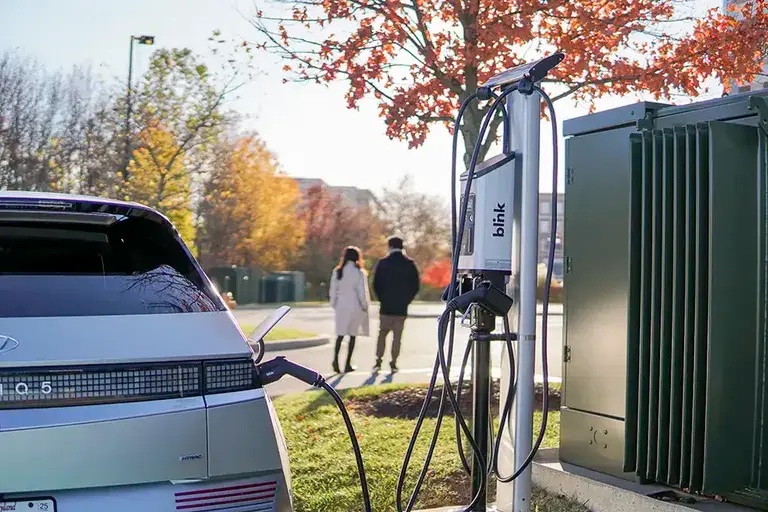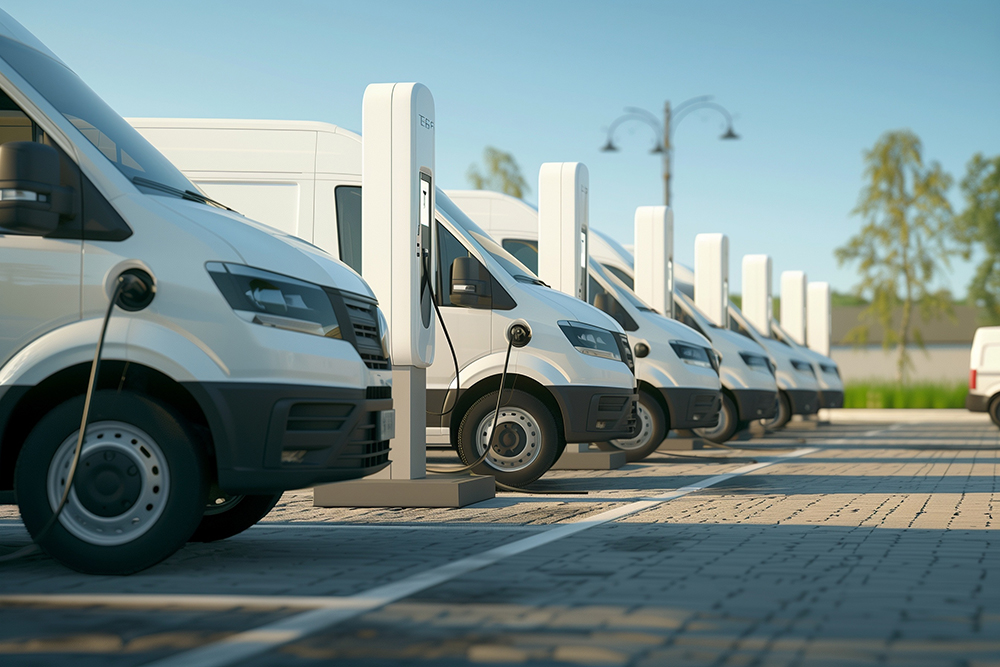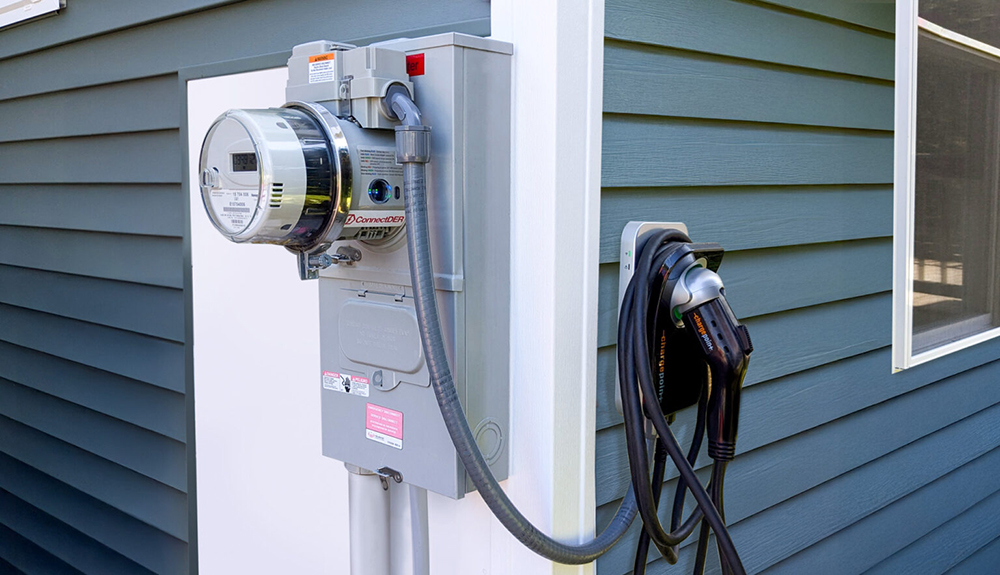Getting the most out of an electric vehicle requires an understanding of the charging basics. Two of the most common issues people ask me about are where to charge and how long charging takes. Often, people are concerned that charging stations aren’t on every corner the way gas stations are. On a recent trip, my wife and I drove past this gas station in Sooke, British Columbia:

We happily drove past it, knowing that unlike gas car owners, we would be able to refuel from any ordinary outlet. In this case the outlet was on the yurt we stayed at 45 miles from the nearest gas station.
Charging from a simple 120V household outlet isn’t always an appropriate choice, but it is the most common and least expensive to set up. Knowing the types of charging available will help you choose the right electric vehicle for you, and plan for charging both at home and on the road.
Trickle Charging – The Cheap, Simple Way to Get Charged
Many people can get all the charging they need from the 120V outlet that’s already in their garage. This is called Level 1 Charging, or more disparagingly “trickle charging.” The Nissan LEAF will pick up about five miles of range per hour of charging from 120V. If your car is parked for at least 10 hours, that’s 40 miles or more of range, more than most Americans drive on a typical day. If you have access to an outlet where you park at night, you can just charge with the cable that comes with your car. If you have a typical daily commute, you don’t need to spend a dime on additional charging equipment.
In the same way you charge overnight, if you can plug in to 120V outlet while your car sits for eight or more hours at work each day, most commuters with an EV-friendly employer could meet their normal charging needs at work. If you can charge at home and at work, an 80-mile round-trip commute becomes very practical with just 120V charging.
That’s all great for typical daily driving, but what happens when you have an exceptional day and drive the battery pack down to near empty? Even though a 10-hour overnight charge at 120V won’t get the car back up to full, it will give enough range for the next day’s normal drive. If you can get an extra couple of hours of charging each night, you’ll get back to a full charge after a few nights.
Of course this doesn’t work if you frequently have back-to-back days of long drives unless you have access to faster charging either at home or elsewhere.
Level 2 Charging At Home and On The Road
Level 2 Charging is charging from a 240V source. This requires more than a simple outlet, but only a little more. Because of the higher voltage involved, a Level 2 charging station provides some extra safety by not sending power to the connector until it’s plugged into a car. Unlike a 120V outlet, a 240V connection can have any of a wide range of power capabilities, so a Level 2 charging station also tells the car how much power it can draw, which may be anywhere from 12 amps to 80 amps.
Because these charging stations are simple, they can supply power to a wide variety of current and future EVs, but it’s up to the vehicle to convert the power to what its battery needs and to manage the charging process. While you might hear someone refer to a charging station as a charger, the charger is really inside the car. The charger is the electronics and software needed to manage the car’s charging process.
The 2011 Nissan LEAF has a 3.3 kW charger that works with any charging station that supplies at least that much power, typically 240V on a 20-amp or higher breaker. This translates to about 12 miles of range per hour of charging, or about eight hours for a full charge from empty to full. If you’re planning to drive most of a LEAF’s range on a daily basis, the LEAF probably isn’t a good fit for you, which means for most LEAF drivers, a Level 2 charging station is overkill in the garage.
Level 2 gets much more interesting at higher power levels. A Tesla Roadster can use up to 240V/70A for a charge rate of about 60 miles of range per hour of charging. That’s pretty silly for an overnight charge if you only drive a typical 40 miles a day. Why would you pay $2,000 or more for a Level 2 charging station to get your overnight charge down to 40 minutes?
On the road, 60 miles of range per hour makes a trip beyond an EV’s single charge range a lot more practical, especially if you have something interesting to do while charging.
So here’s the funny thing: having a fast charging station at home may have very little value, but having a fast Level 2 charger in your car can be tremendously helpful for trips where you’re waiting for that charge instead of sleeping through it.
By mid 2012 the Ford Focus is expected to be available with a 6.6 kW on-board charger, good for about 24 miles per hour of charging. Nissan will bump the LEAF to the same level when they start production at their new Tennessee plant in 2012. The Tesla Roadster already supports 16.8 kW charging and the Tesla Model S will support up to 20 kW charging. For driving around town, and charging overnight, it’s not a big deal, but for trips beyond the single-charge range, high power Level 2 charging matters a lot.
DC Quick Charge
DC quick charge means charging at even higher levels from an external charging unit. By moving the electronics and smarts needed to manage charging outside the car, we can have faster charging without putting expensive high power management electronics into the car. This offers both opportunity and challenges.
Because more of the charging electronics move outside the car, there are more issues in creating a standard every automaker can use. Higher power means more safety issues and the connector needs to be larger to carry more power, again creating more complexity in creating a universal standard.
There’s a standards war going on right now over DC Quick Charging. Nissan is using a standard widely deployed in Japan called CHAdeMO. The LEAF has an option for a CHAdeMO port to support DC quick charging that will charge an empty battery pack to 80% in under 30 minutes. Meanwhile, the American automakers are resisting CHAdeMO and working with SAE to create a different standard. At best, the SAE standard is a couple of years away from being adopted and deployed. Maybe CHAdeMO will win by being first. Maybe a new SAE standard will become the dominant standard in two to five years. Hopefully we won’t have some huge number of LEAFs and other EVs with CHAdeMO ports and nowhere to charge.
Meanwhile, Tesla Motors isn’t satisfied with CHAdeMO, doesn’t want to wait for SAE, and wants a better connector than either. They have told Model S reservation holders they plan to use a custom, compact connector that they claim will support 90 kW charging, nearly twice the rate of the current CHAdeMO stations. Will Tesla be successful in deploying their own proprietary charging network? Will their connector design shame SAE into picking a design that’s less unwieldy than the current prototype? We’ll see.
DC quick charge stations require big power feeds and expensive electronics. I’ve heard a single station can cost between $25,000 and $100,000, although Nissan has recently announced a CHAdeMO station for just under $10,000. That’s a lot of capital investment to make back selling a cheap commodity. While EV drivers may be very happy to pay a large premium over the cost of electricity for the convenience of quick charging, most people will rarely need it.
DC quick charge is also hard on the battery pack. For today’s batteries, a charge rate that can fill the battery pack from empty to full in less than a couple of hours puts additional wear on the batteries and can shorten their useful lifetime. For this reason, the owner manual for the LEAF says, “Nissan recommends that quick charging not be performed more than once a day.” As an EV driver, I try to minimize doing the things that shorten battery life: high charge rates, charging to 100%, discharging below 10%, and straining the batteries when they are hot.
So, a DC quick charge station is very expensive and is likely to have a low usage rate. Even if it’s priced competitively compared to home electricity rates, these stations may not get much use. If quick charging is priced higher, I expect it will get even less use.
While I think DC quick charging could be incredibly helpful to EV drivers who want an occasional quick charge for a long drive, I personally don’t see a business model that makes it profitable. It will be nice if it happens, but I’m not counting on it.
Real World Charging
My wife and I have been driving electric since 2008 when we purchased one of the rare surviving 2002 Toyota RAV4-EVs.
The RAV4-EV has a 100-mile range and a 6.6 kW charger. It’s been awesome for all our local driving. Most nights it only takes an hour or two to charge. For us, with no compatible public charging stations within hundreds of miles, it’s not practical for longer trips. In California where there are charging stations, owners can easily drive 150 miles in a day.
Our Tesla Roadster has a 240-mile range and a 16.8 kW charger. With the longer single-charge range and the faster on-board Level 2 charger, we can do more distant travel.
There are a few 16.8 kW Tesla charging stations around that are a big help. In August we drove 300 miles from Seattle to Coeur d’Alene, Idaho. To make the extra range, we just had to stop at a Tesla charging station in Ellensburg, Washington, while we ate a leisurely lunch. Spending a bit under two hours of charging to pick up an additional 100 miles of range is a welcome break in a six-hour drive, but if the Roadster only had a 3.3 kW charger, waiting eight hours for those miles would be an entirely different matter.
On another trip the same month, we travelled to the San Juan Islands and then on to Vancouver Island in British Columbia. Over the course of a week, we drove 450 miles using only 120V charging. Our daily mileage was low enough that we were able to get all the charging we needed using ordinary outlets at hotels and B&Bs. With just a few adjustments to the schedule, a LEAF could make the same trip.
Our 2011 Nissan LEAF has a 3.3 kW charger. Although that’s totally adequate for overnight charging, we’ve already bumped up against the charge rate limit. On a day when we needed to make a 50-mile trip to the airport just before lunch, a 20-mile trip into Bellevue and a 45-mile trip to Seattle in the evening, we couldn’t do all of that in the LEAF because it took too long to recharge after the airport trip, even using a different vehicle for the afternoon trip to leave the LEAF charging. That’s an unusual amount of driving for us, but it was frustrating to have our driving limited not by the battery, but by the on-board charger. With a 6.6 kW or faster on-board charger we could have easily done it.
Advice to New EV Owners
For those considering purchasing their first EV, I’d recommend they be used primarily for local driving. We’re a few years away from having the cars and infrastructure needed for affordable EVs to make easy road trips.
If you are eligible to receive a free Level 2 charging station through the EV Project, and don’t mind sharing information about your driving and charging, and your install costs don’t greatly exceed the $1,200 allowance, that’s a cheap way to get Level 2 charging in your garage. Go for it!
If you can’t get a free charging station, and you typically drive under 40 miles per day, you will likely be well served using Level 1 charging with the supplied charging cord and an ordinary household outlet (preferably on a dedicated 20A outlet). I recommend you at least try it if the numbers work for you. Even if you eventually decide you need Level 2 charging, delaying purchasing may save you money as charging stations are a quickly evolving and competitive market.
Be sure to check out the local EV community – there may be a chapter of the Electric Auto Association near you. At the national level, Plug In America helped with formulating the $7,500 EV tax credit (and made sure it was tied to battery size so we got usable EVs). Their work continues to make life better for EV owners through outreach, education, and legislative work. Both are excellent sources of current information for a new EV owner in this quickly changing environment.
This article originally appeared in Charged Issue 2 – APR/MAY 2012




